GARDENING IN HARMONY WITH NATURE IN THE NORTHEAST
Understory Trees and Shrubs
Strolling through many eastern woodlands near human habitats, one might be forgiven to think that forests only consist of tall canopy trees and a herbaceous layer of ferns and sedges. The layer of understory trees, shrubs, and seedlings of canopy trees is completely missing. While this park-like landscape may be aesthetically pleasing, it is utterly deprived of diversity and ecological value.
The reason for this degraded state of our forests is excessive deer pressure, driven by the absence of top predators such as wolfs, and the unwillingness of communities and hunters to restore any resemblance of balance to the deer population. Far too often the only factors limiting deer populations are winter starvation and roadkill.

In a healthy deciduous forest every vertical level is occupied, and plant and animal diversities are great: From top to bottom there exist habitats in (1) full sunlight at the top of the tallest trees, (2) within a layer of younger trees patiently waiting in the shade for their chance to penetrate the canopy when older trees succumb, (3) within true understory trees that thrive and reproduce in the light shade of the forest, (4) in shrubs that provide dense cover for wildlife, (5) within the herbaceous layer of flowering plants, ferns, and sedges, and (6) in the soil-layer of mosses and fungi.


Here we focus on the all important middle vertical layer of shrubs and small trees, that support wildlife by providing food directly in the form of nectar, pollen, and fruits, or indirectly through the insects that feed on the leaves. Shrubs and small trees also provide shelter from predators within their dense network of branches, and perching sites to hunt for insects. Some of these plants, such as Spicebush or Flowering Dogwood, are well adapted to the conditions in the forest interior, while others prefer at least some direct sunlight at forest edges for best performance.
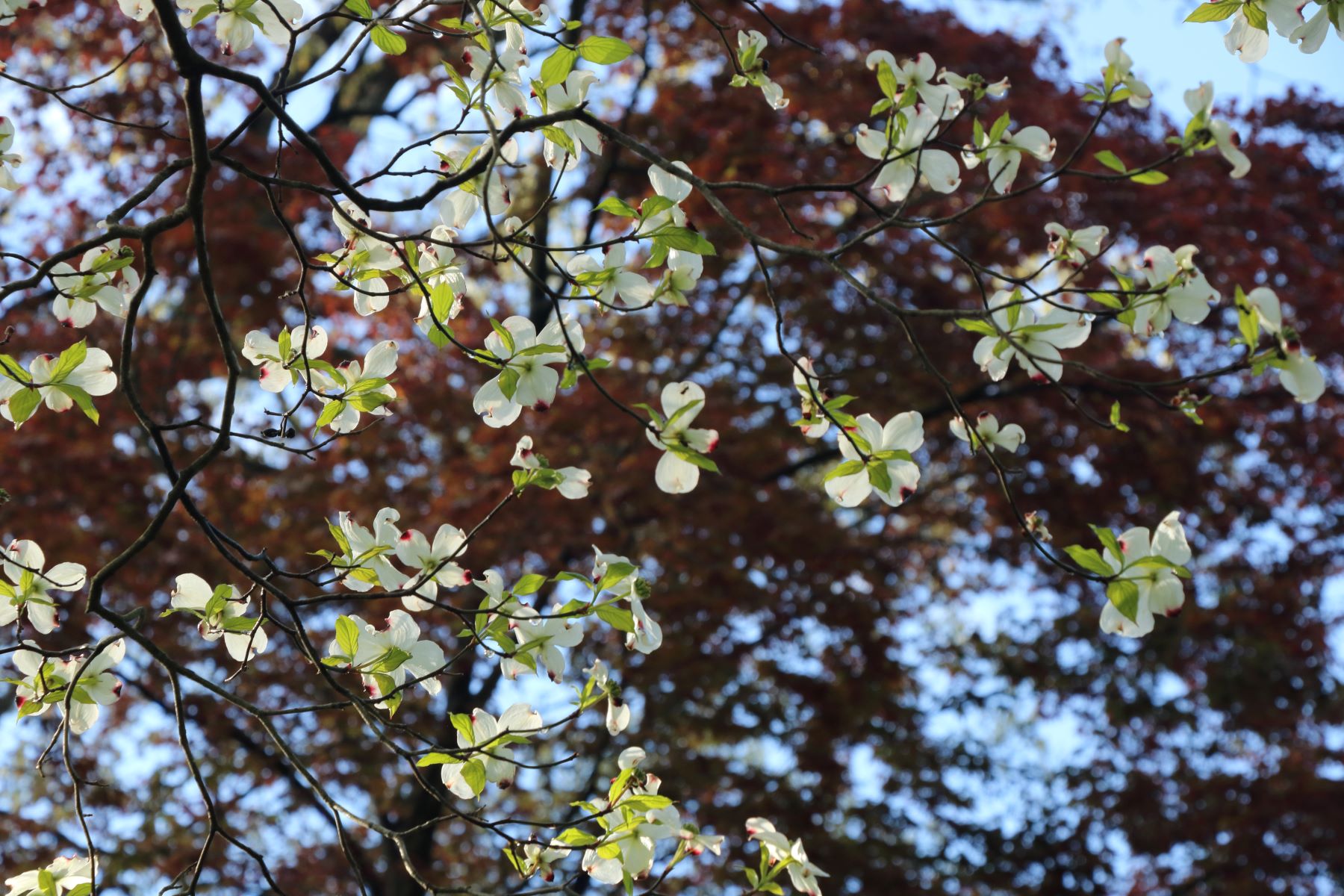
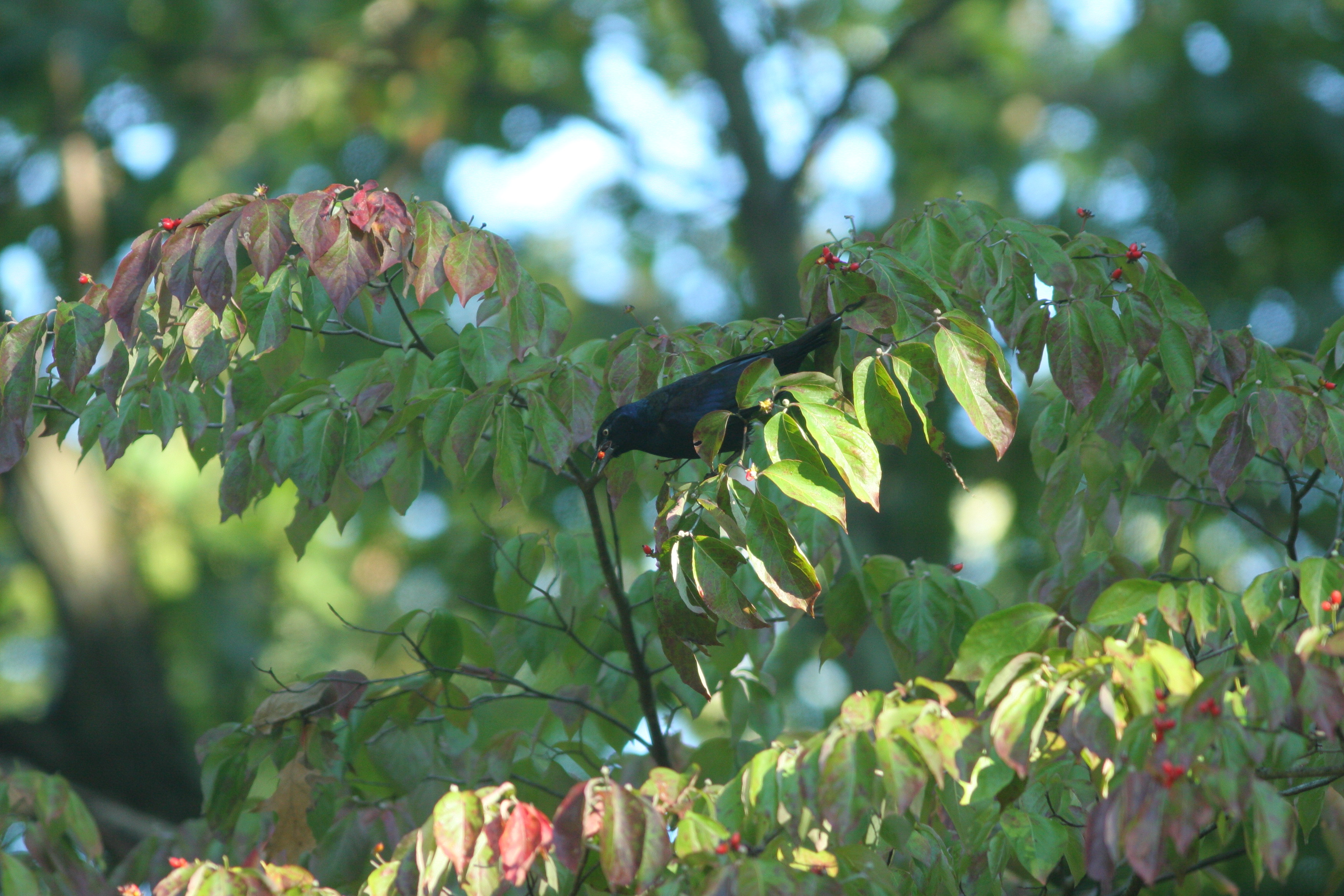
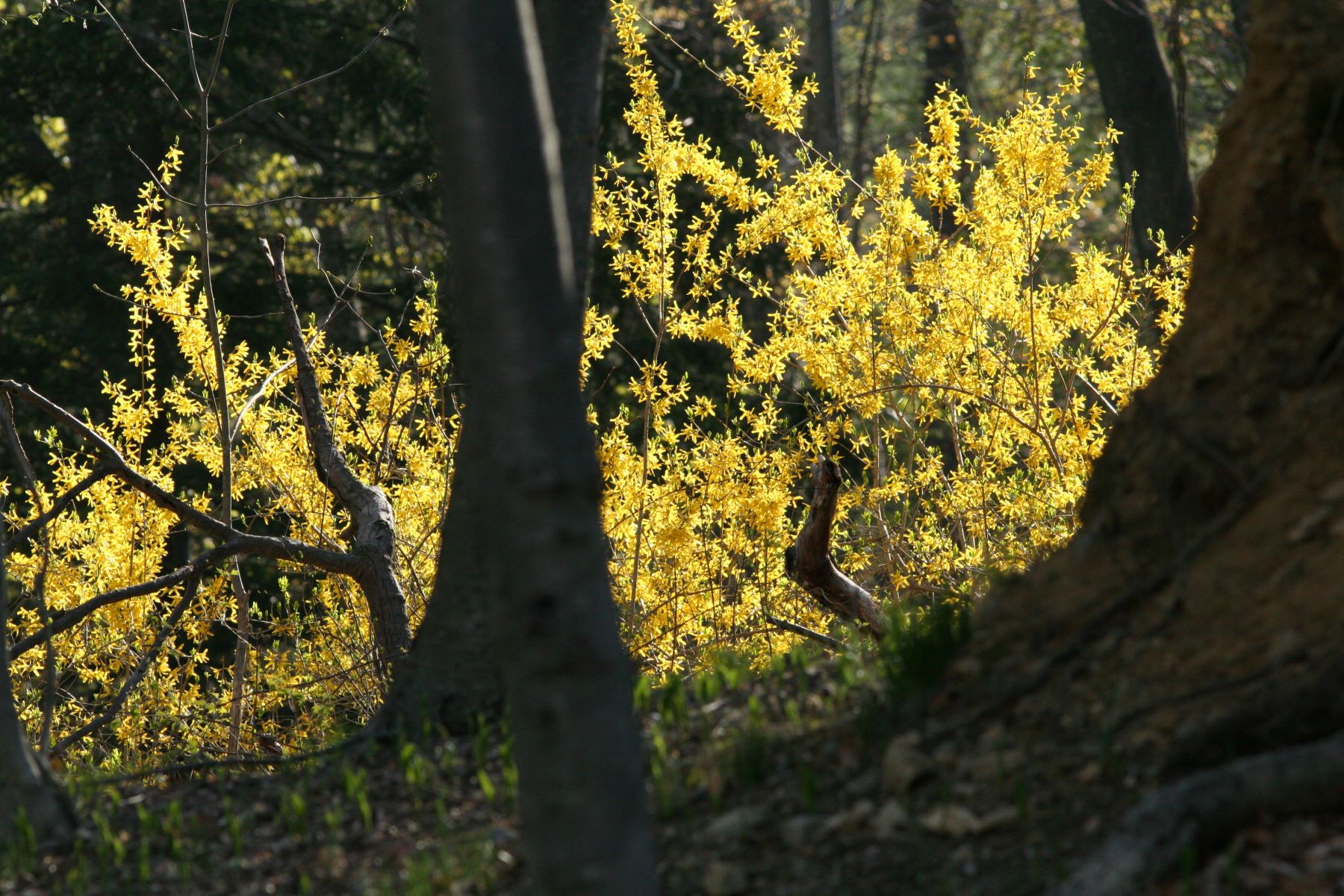
Burning Bush and Forsythia have their seasonal appeal in autumn and early spring respectively, and they provide cover for wildlife, but the space they occupy can be used by oh so much better options, so over the course of several years they were replaced. As we can observe in adjacent areas, Burning Bush is also a horrible spreader, that eventually dominates an area to the exclusion of anything else. We are still fighting the Wineberry and Wistera, which keep popping up again and again after pulling them out.
A notable exception to our “mostly native” rule are the Japanese Maples and their relatives. We love their multi-seasonal interest, and have actually added to the mix several cultivars of Acer palmatum and Acer shirasawanum.
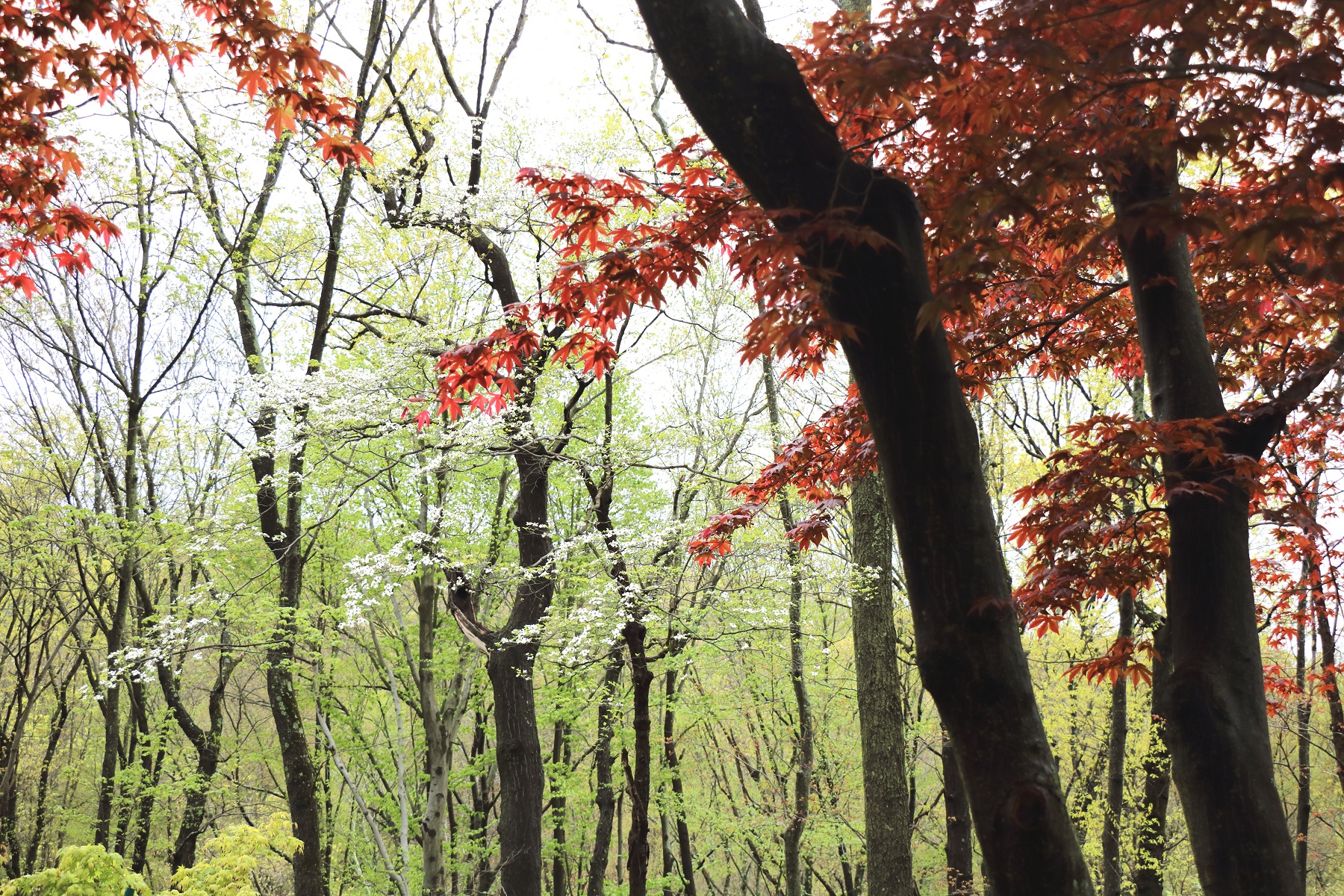
The native Witch Hazel is uniquely adapted to colonizing steep rocky slopes, where little else can find a footing, and it has done so on our slopes with abandon. Until the last storm it shared the space with oaks, birches and beech trees, but several of those much taller trees fell, and now the slope is almost completely dominated by Witch Hazel. We don’t mind, because we like the multi-stemmed habit of this small tree or large bush, and the unique flowers and flowering time in (hold your breath) NOVEMBER, just as the beautifully rounded leaves drop. Autumn leaf color is a nice yellow as well, but we usually hope for them to fall early, so that the flowers can shine on the bare branches!
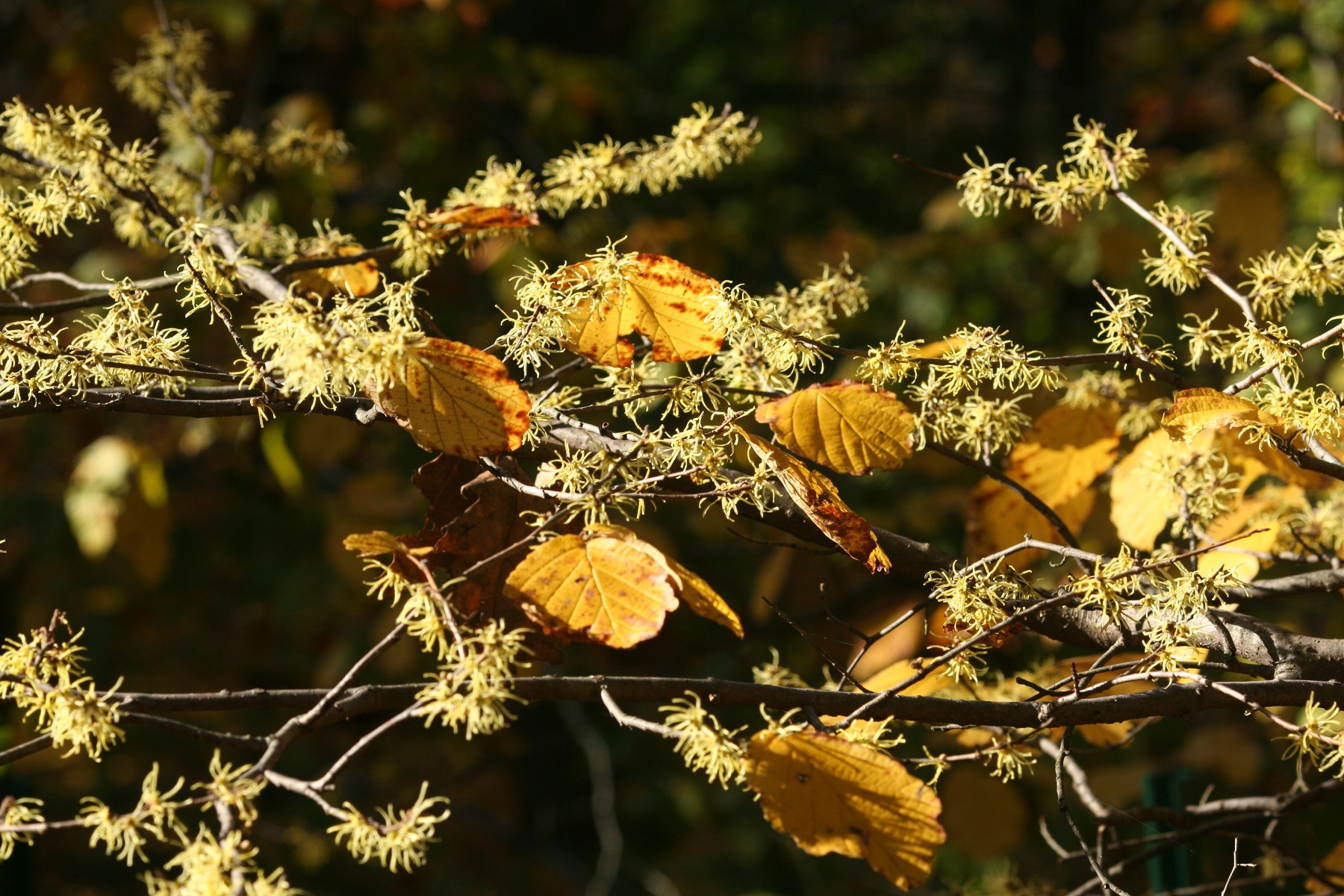

in Witch Hazel
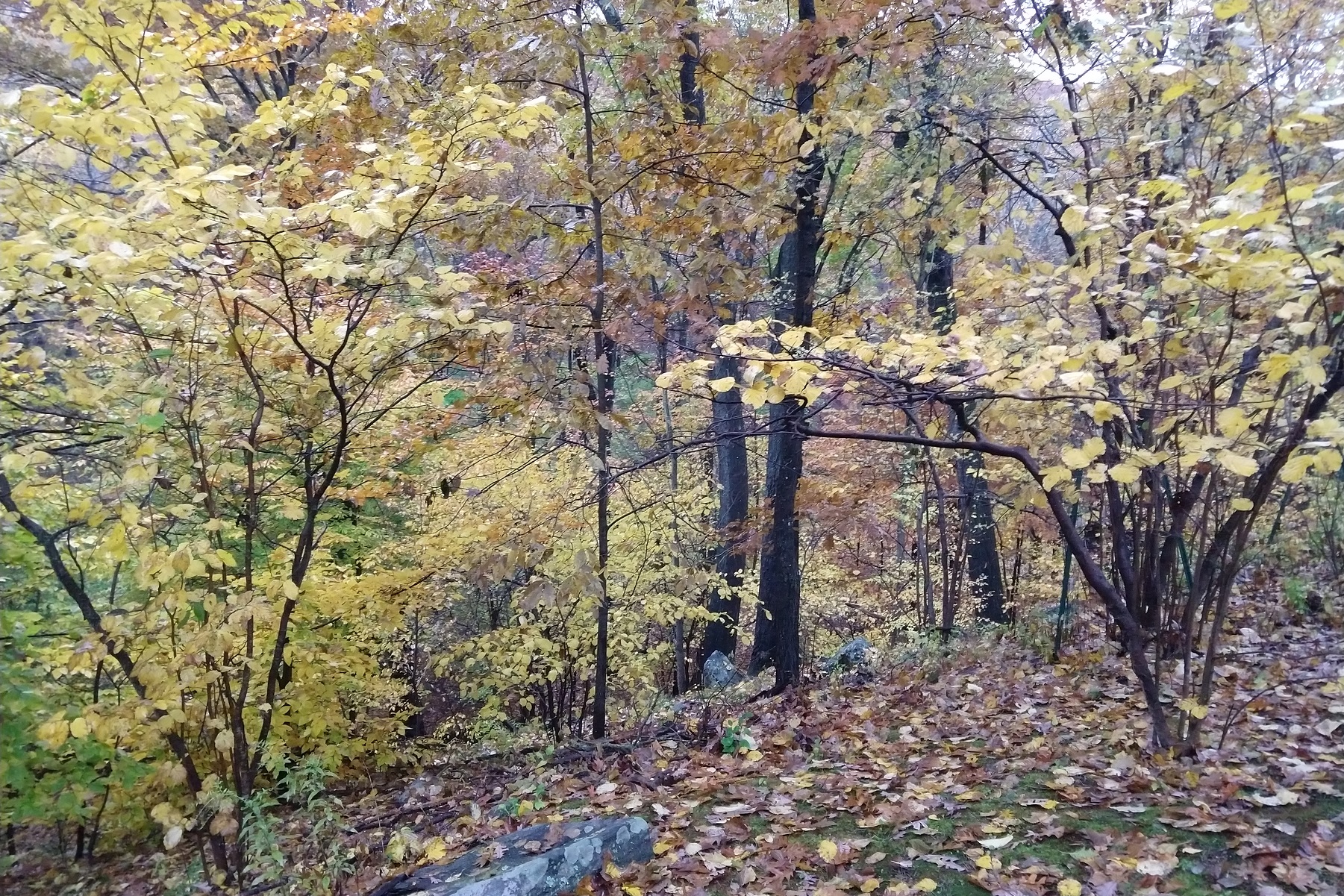
Multi-stemmed Habit
Flowering Dogwood (the species) has self-sown even in deep shade in our woods. Blooming is certainly improved in edge environments and whenever a gap in the canopy develops due to fallen trees. We love the large white “flowers” (which are actually specialized leaves called “bracts”), nice shape of the trees, and red berries in fall/winter, that are very attractive to birds. To top it off, the leaves have great orange-red-burgundy fall color. This is truly one of nature’s best trees for 4-season interest with great wildlife value.

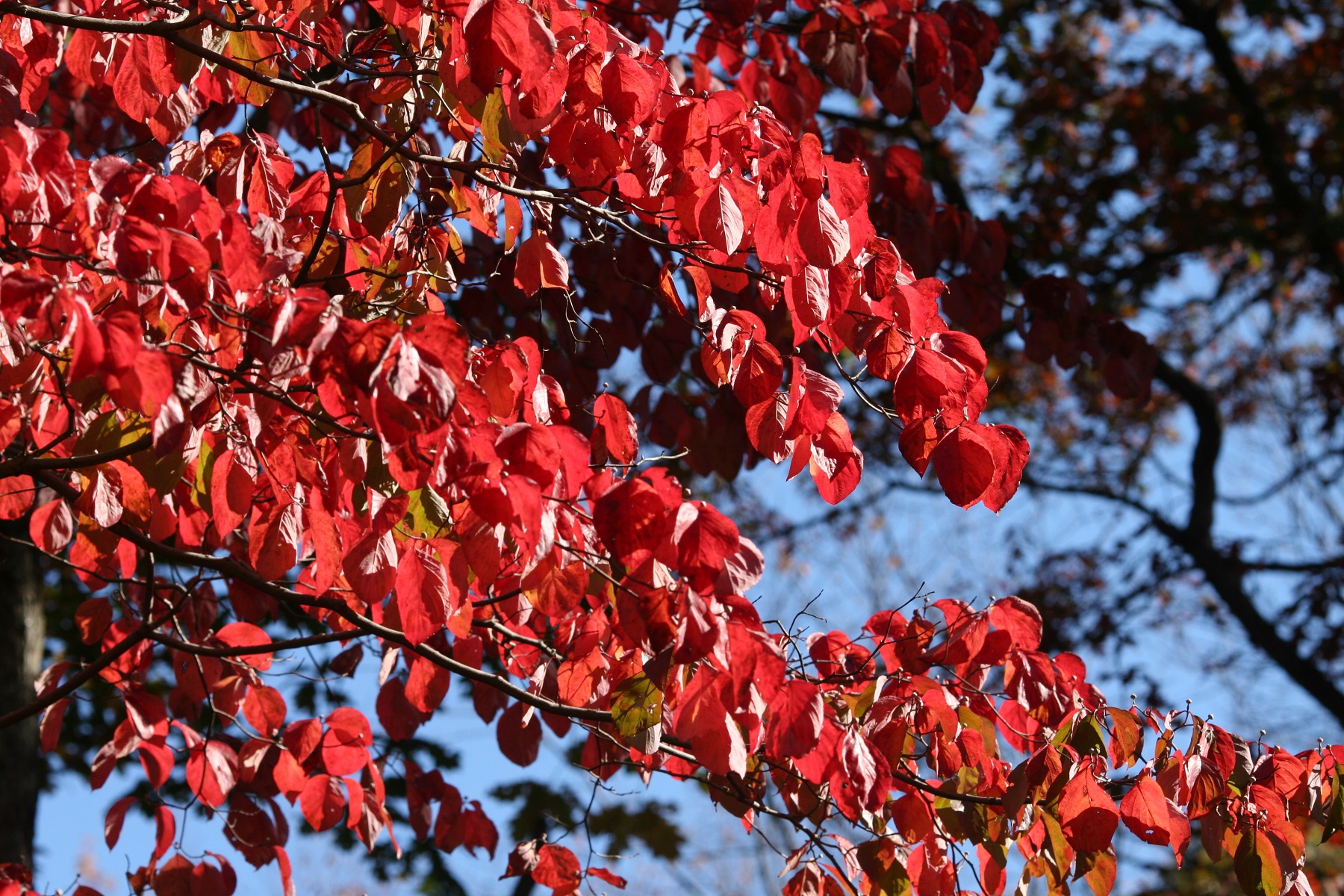
Nurseries carry several excellent cultivars of Flowering Dogwood with white or pinkish-red flowers. We have planted the varieties ‘Rubra’ and ‘Cheyenne Chief’ close to the driveway and enjoy the long-lasting flowers and fantastic foliage display in fall.

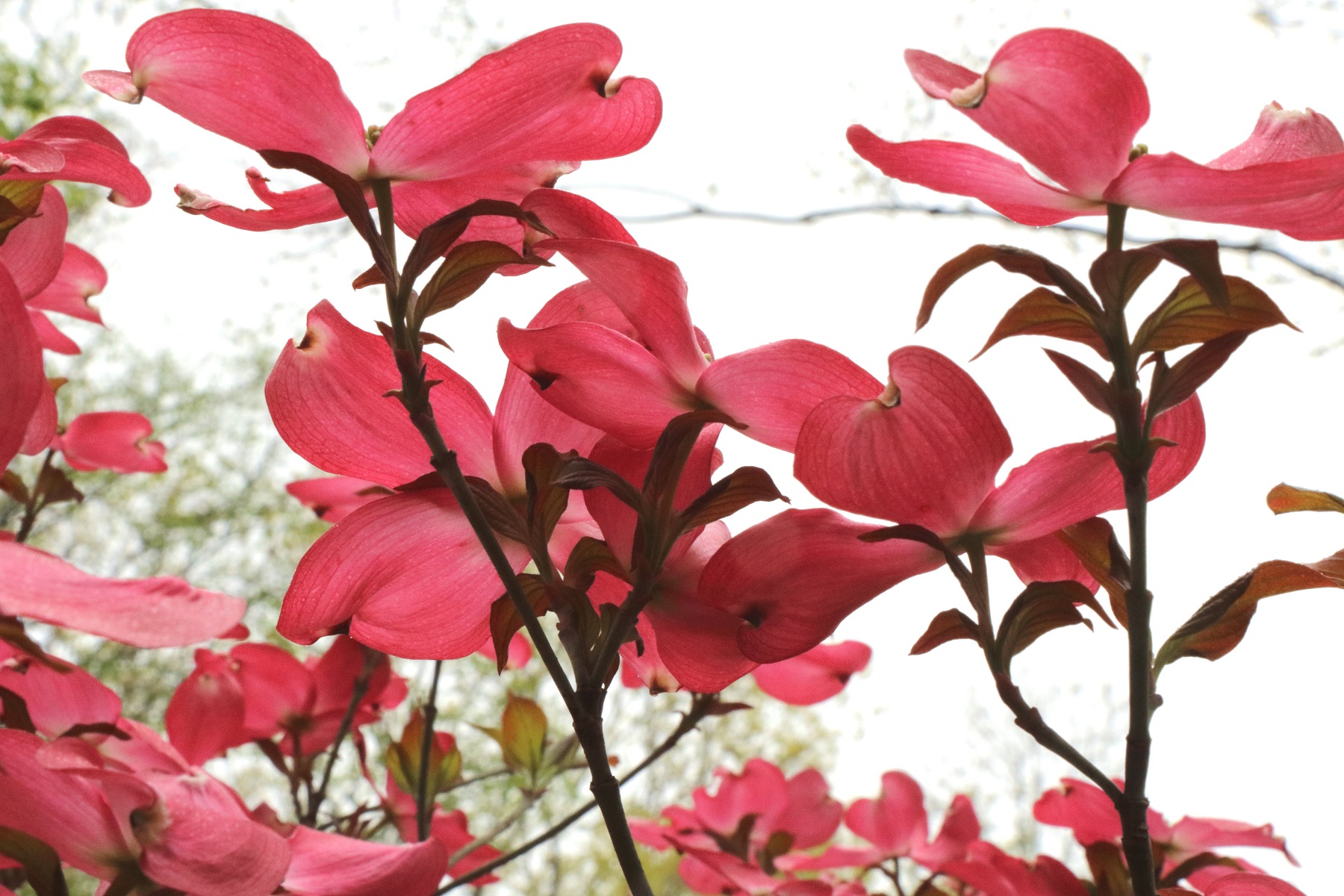
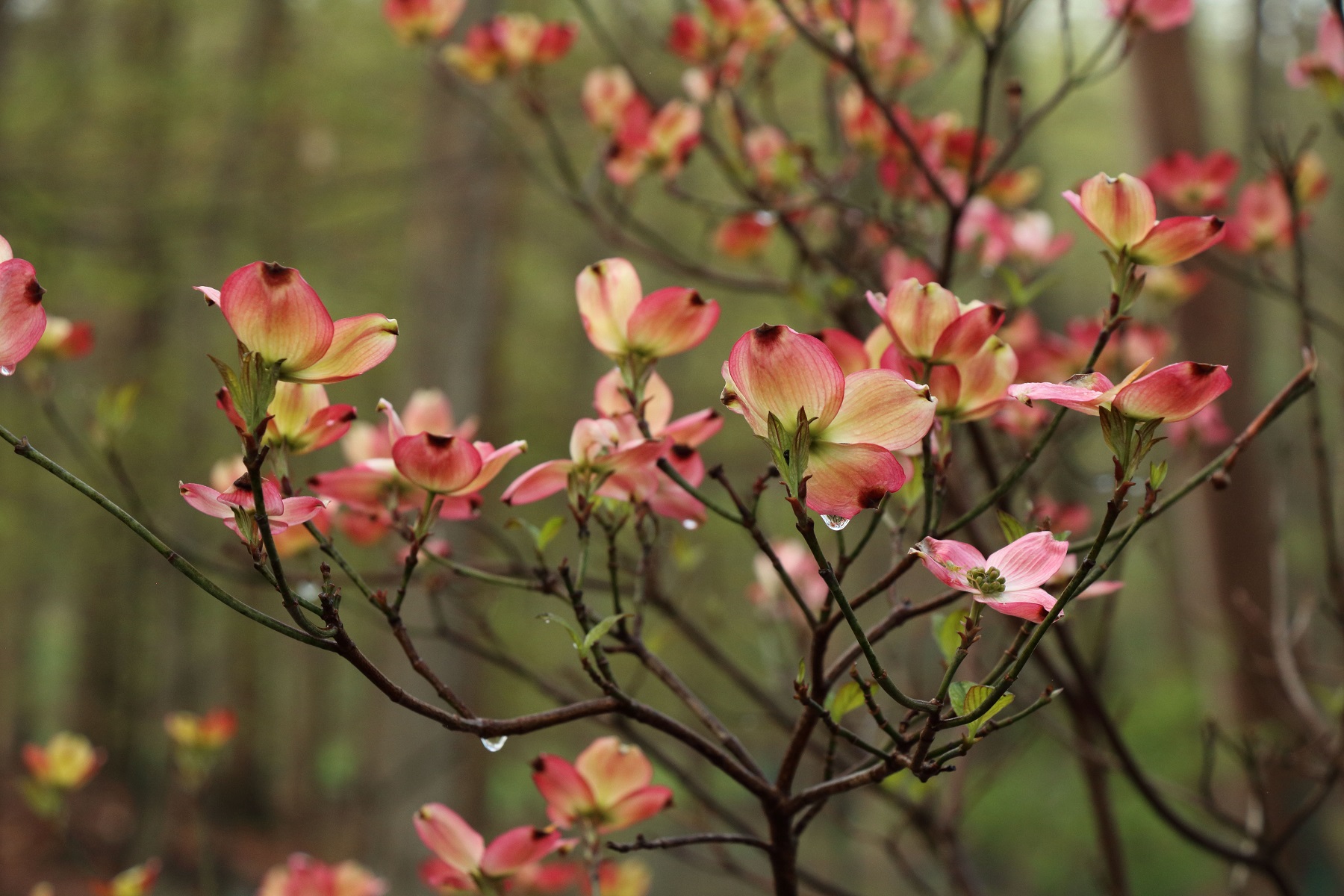
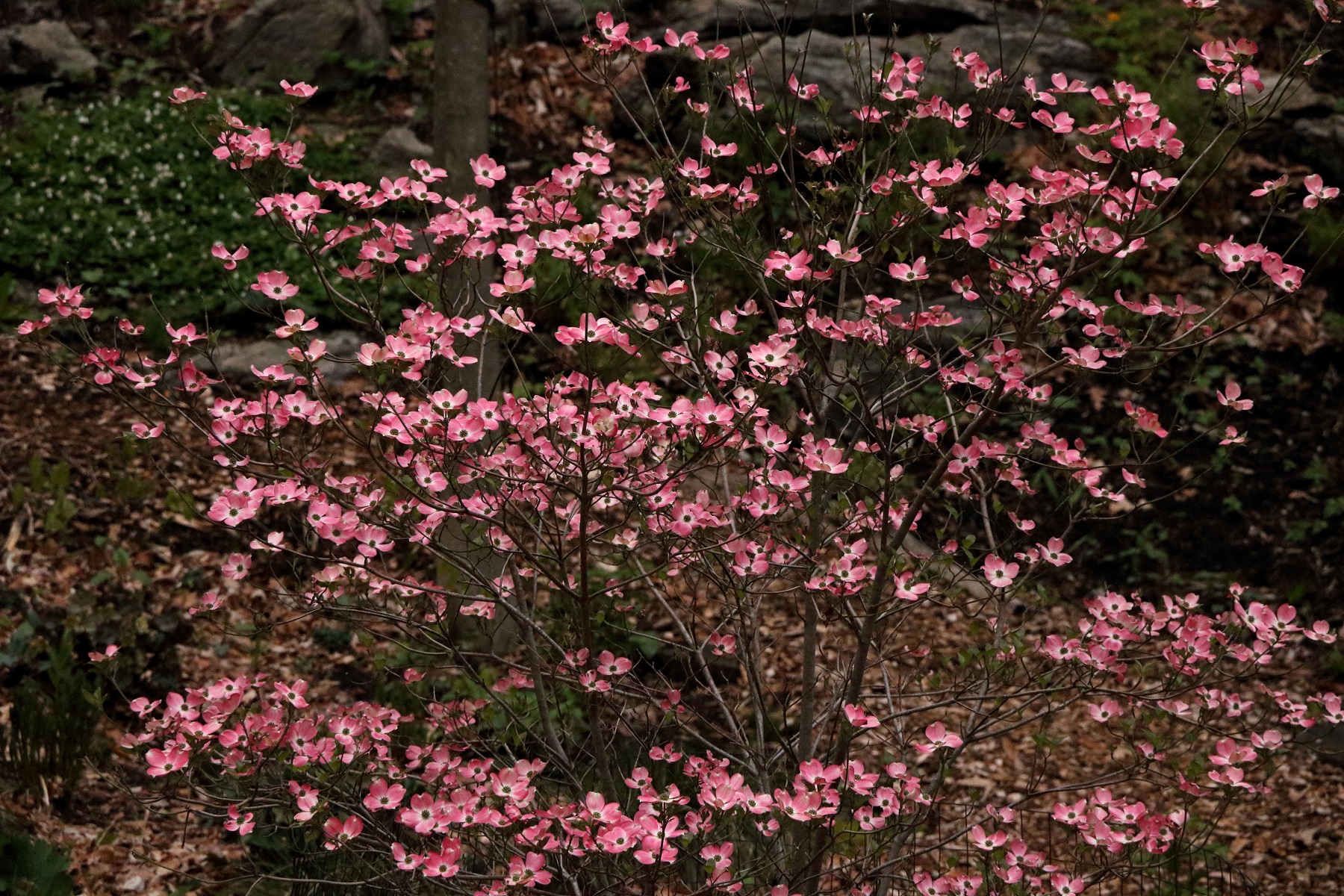
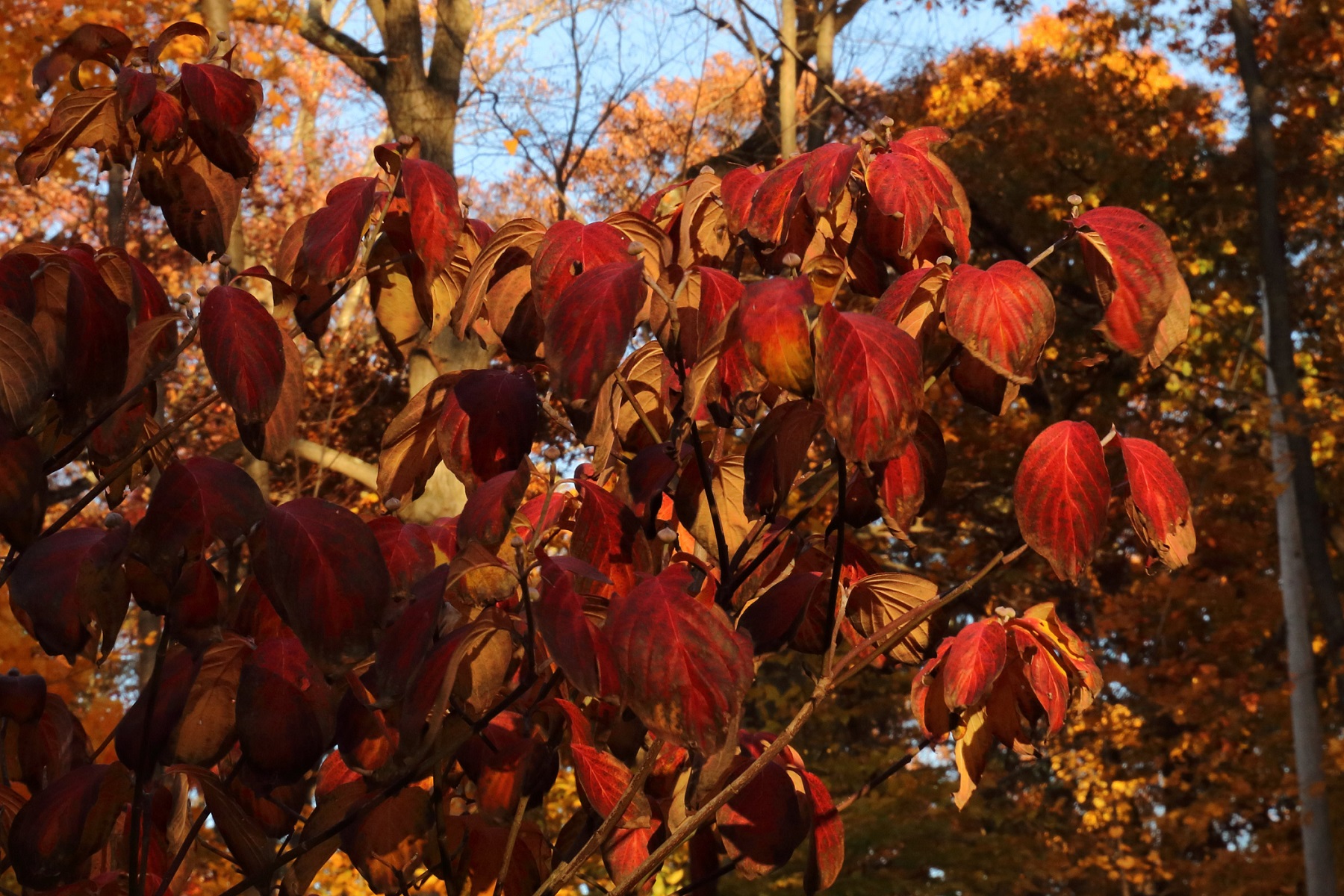
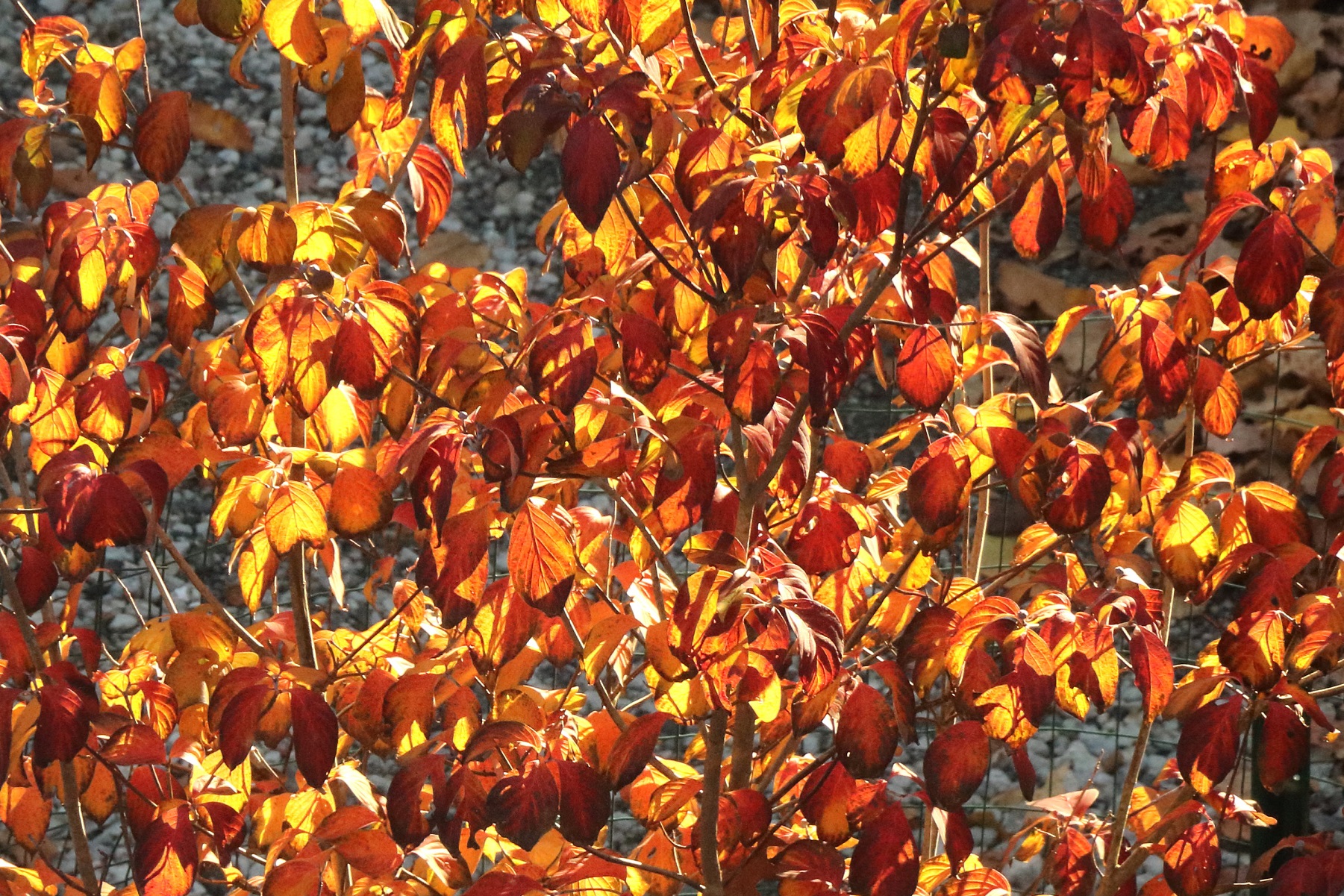

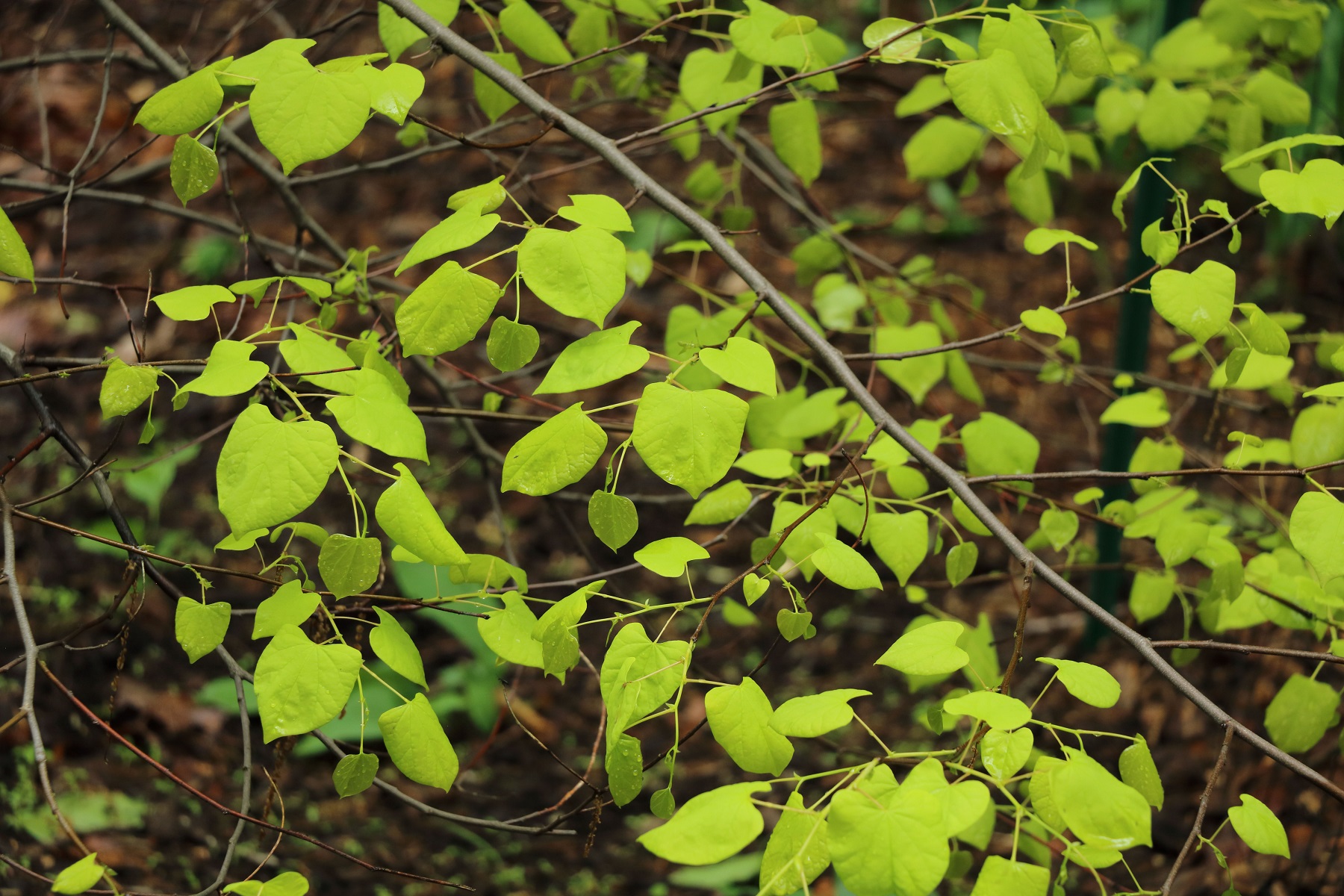


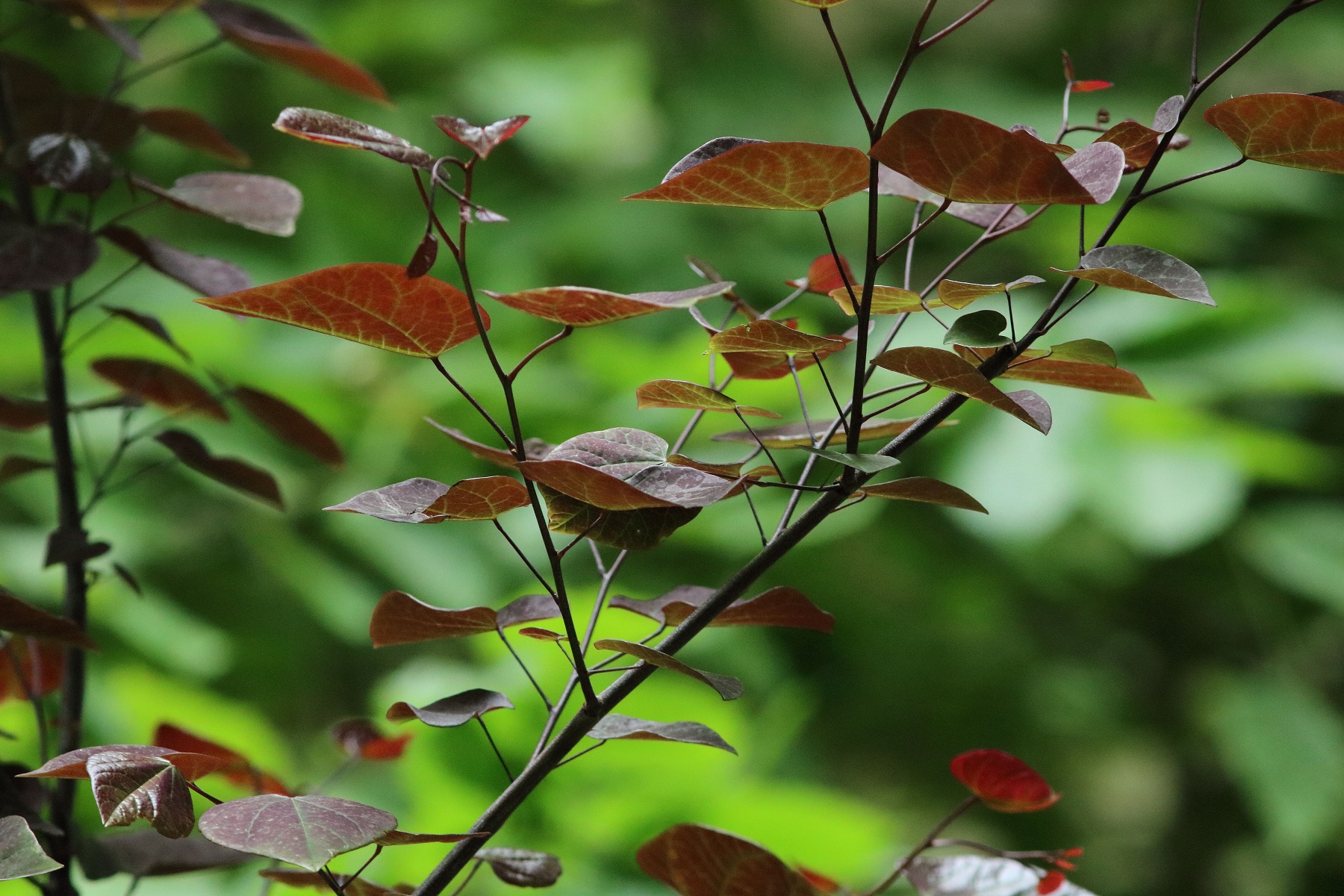
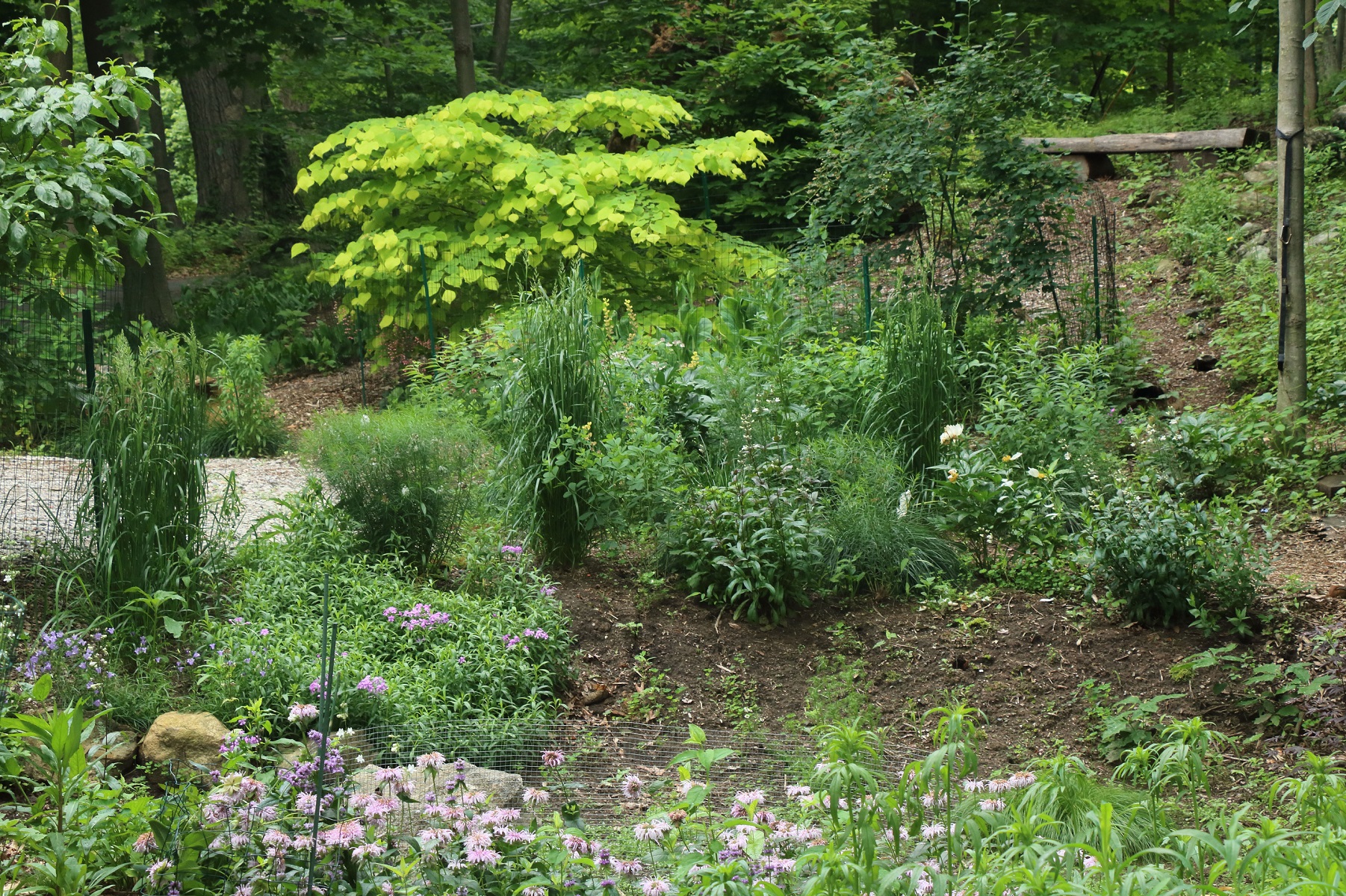
Sassafras, one of the original understory trees on our property, forms clonal colonies by root suckers every couple of meters. It’s dioecious, so each colony is either male or female. The ones we have all seem to be male, so we have the showier flowers, but no fruit. Sassafras can grow quite tall, but because it suckers, it can be cut back to the ground wherever it becomes too tall. The Sassafras leaves, appearing after the flowers, are uniquely shaped. They can be very deeply lobed with three lobes, asymmetrically two-lobed, or exhibit a single simple lobe. Fall color is a pleasant yellow/orange.
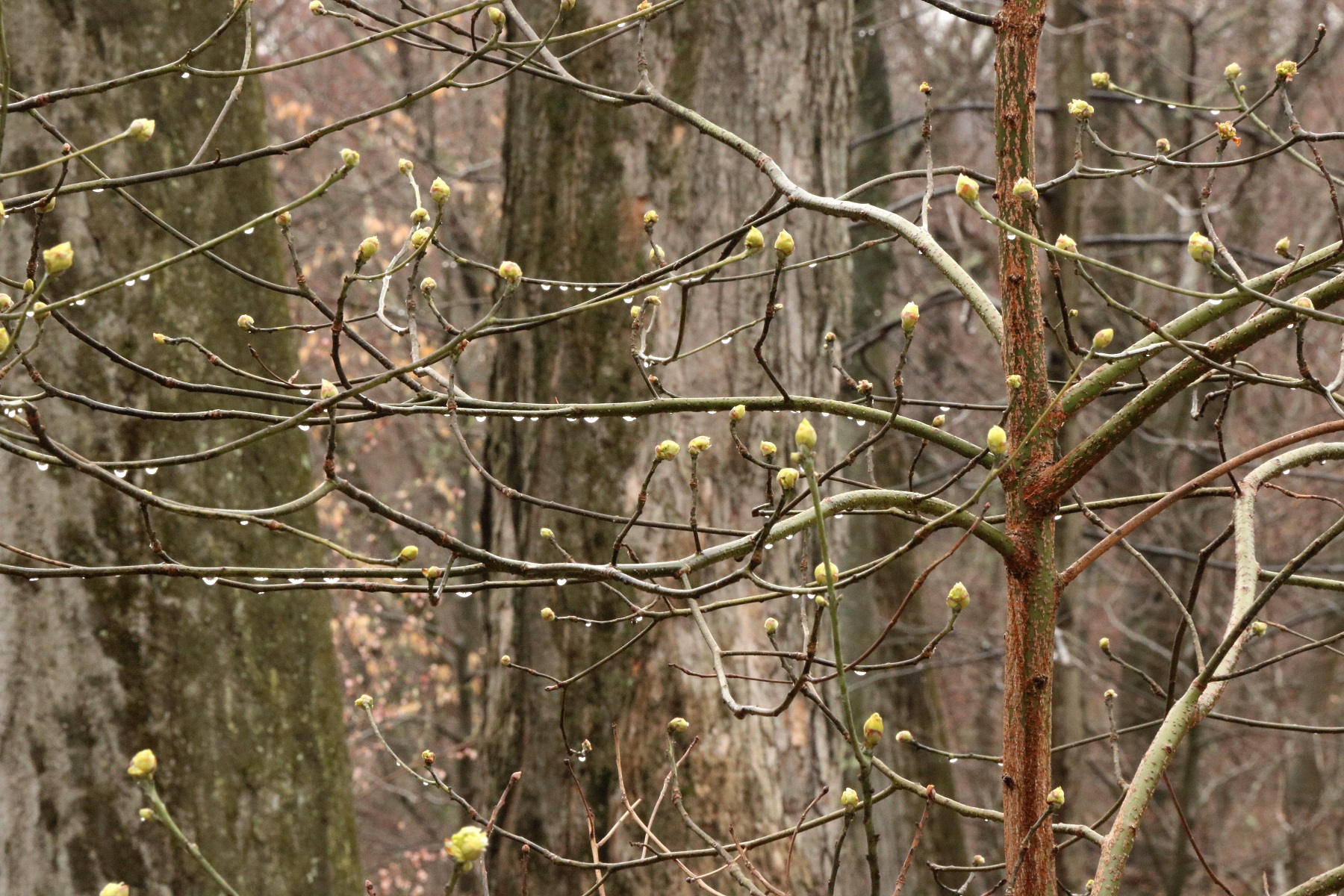
Flower Buds

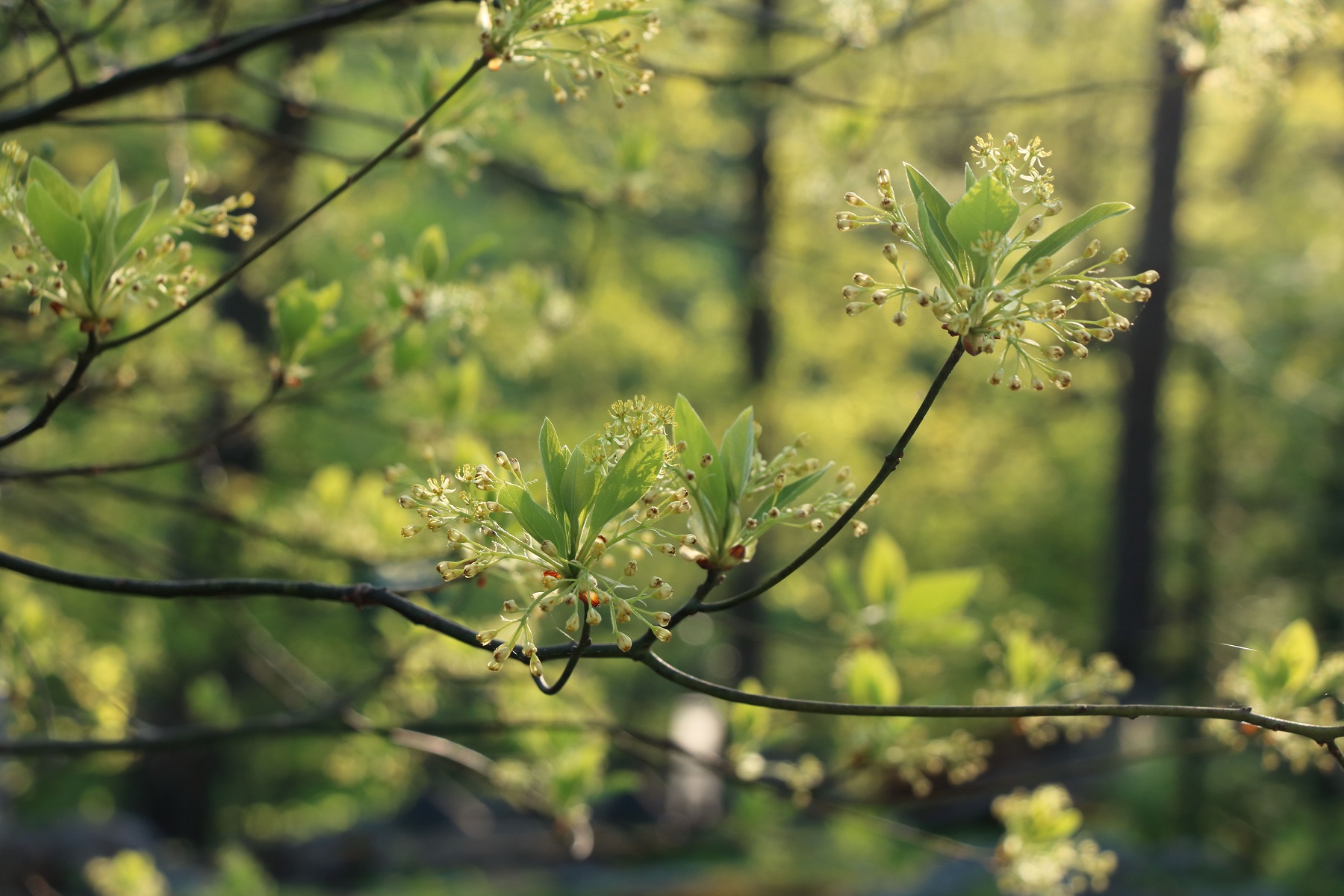
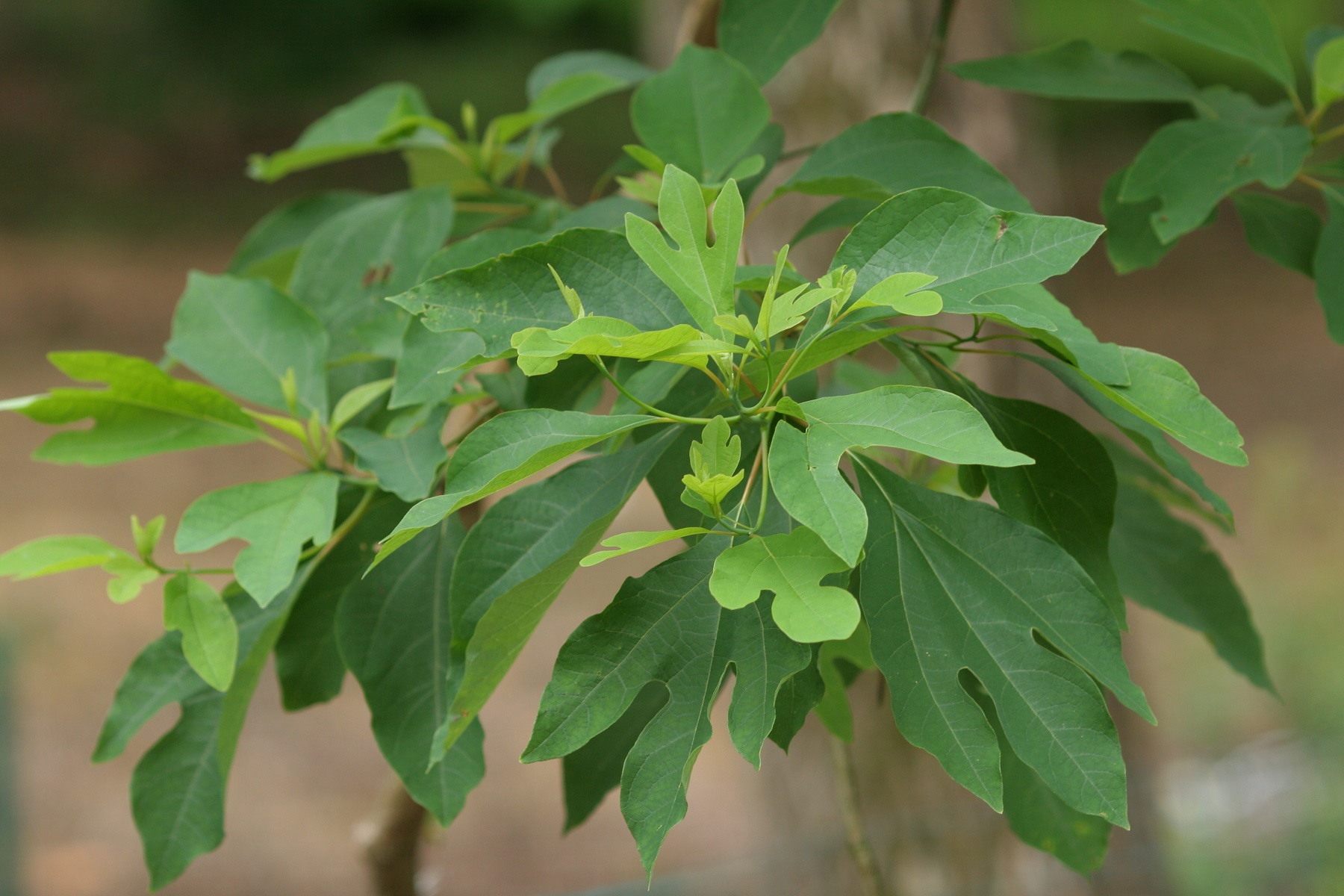
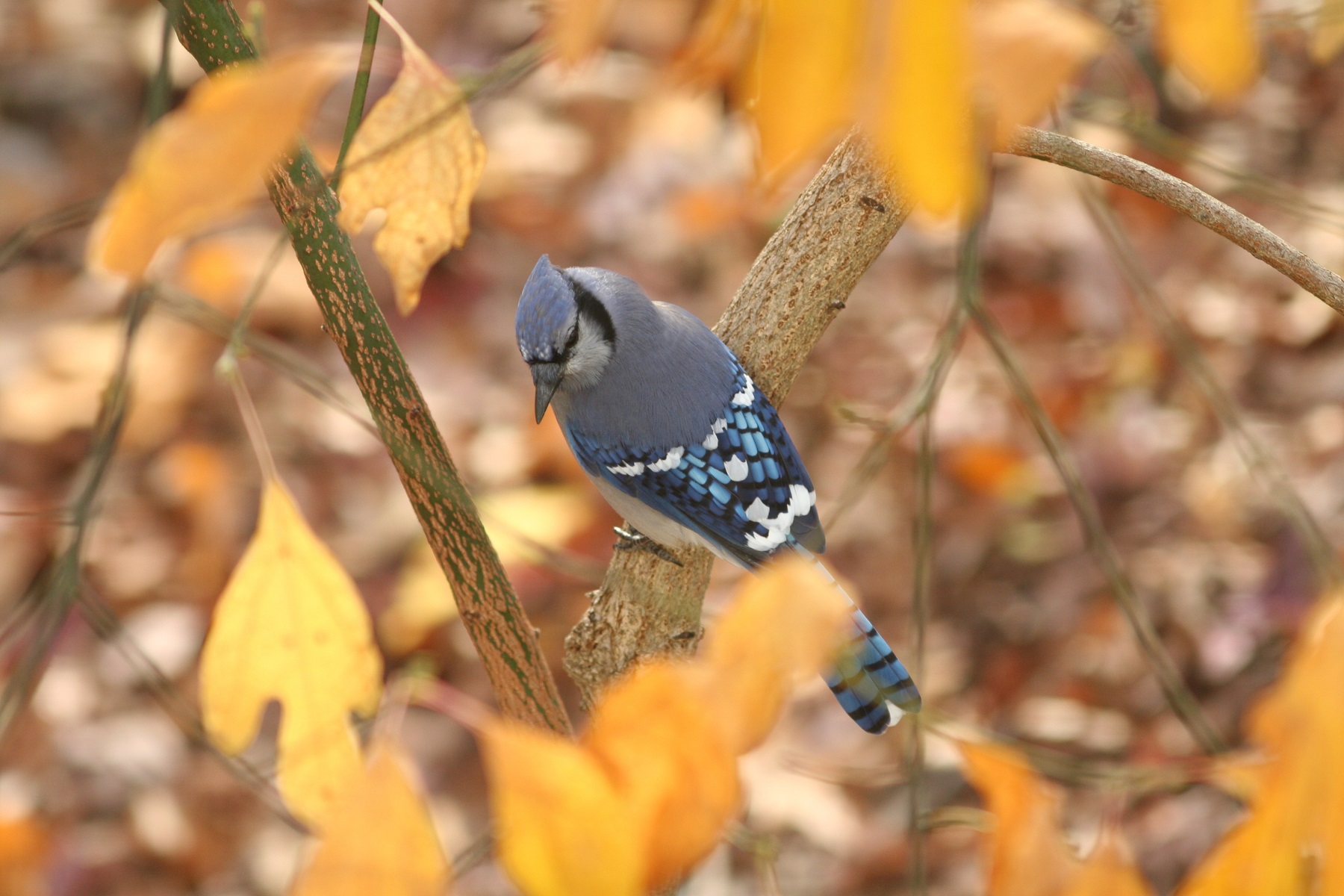

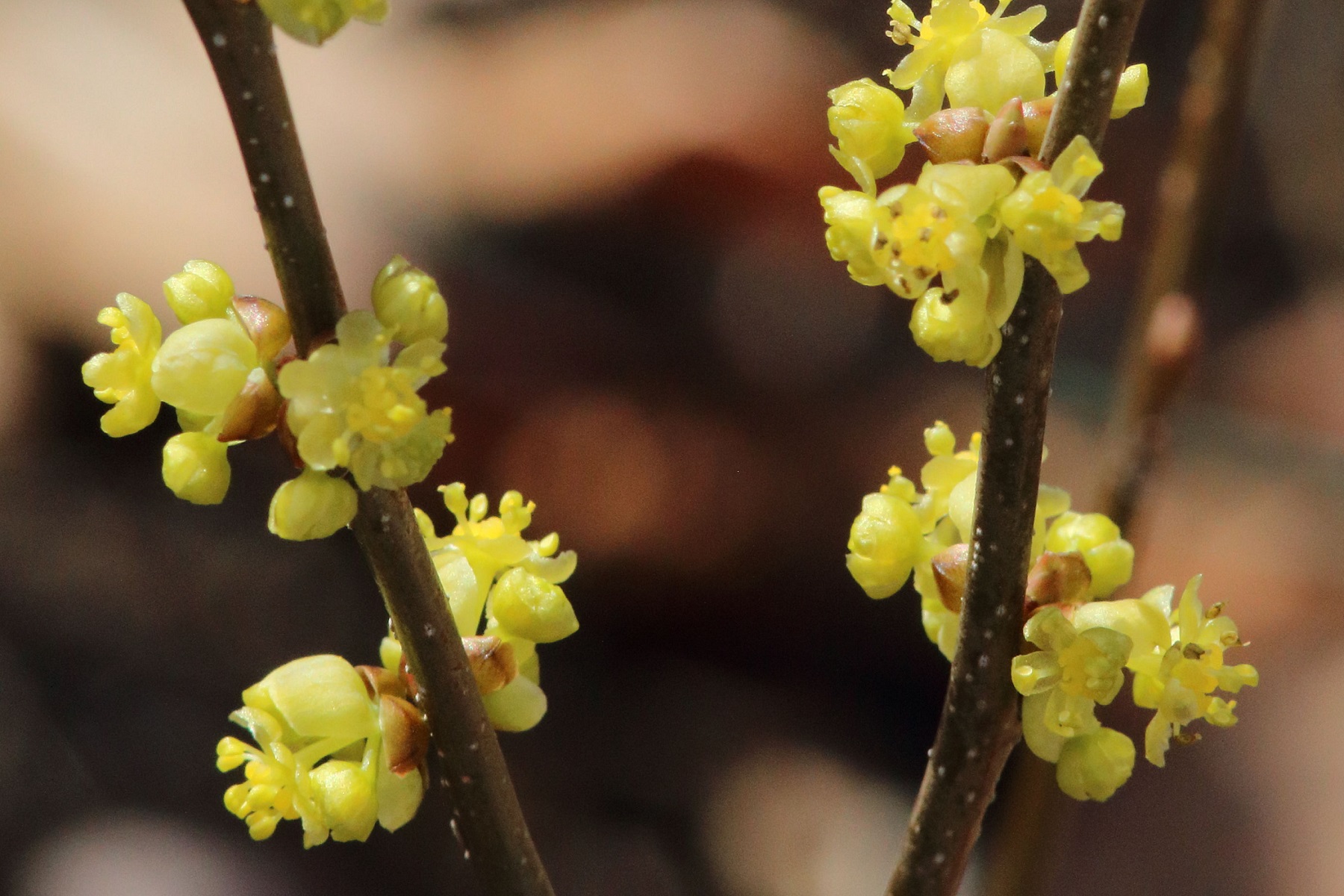
Female Flowers
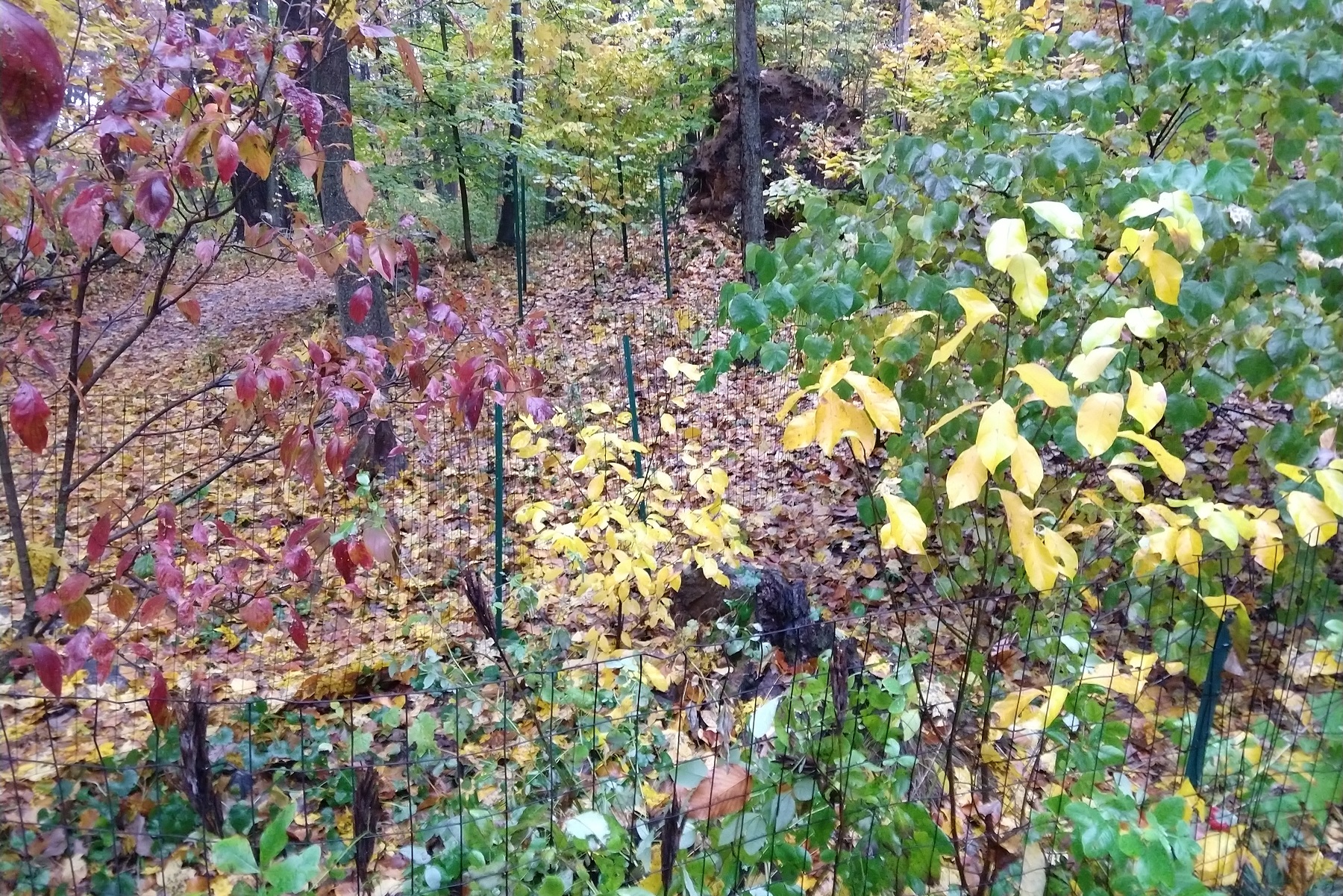
Yellow Fall Color
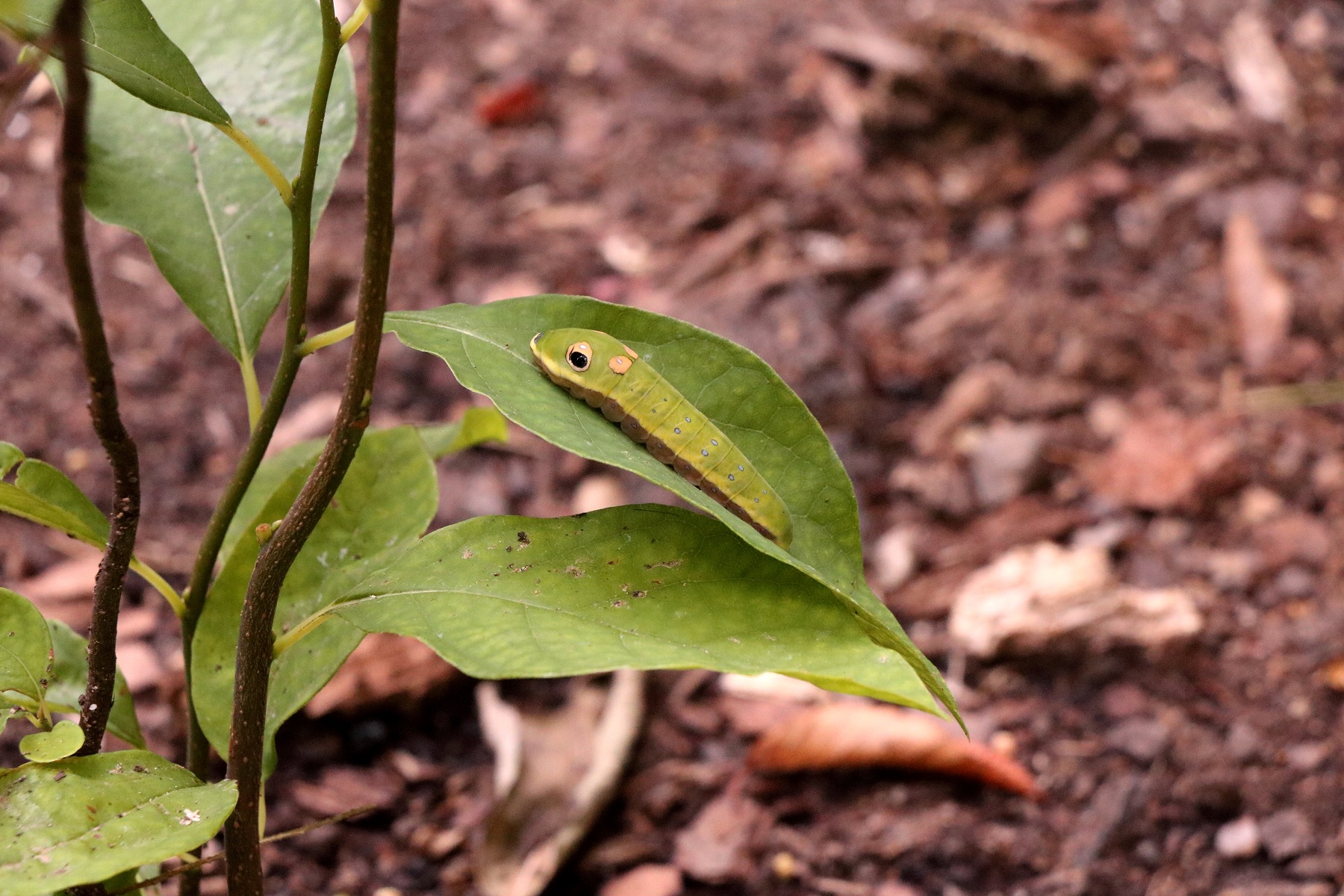
on Spicebush
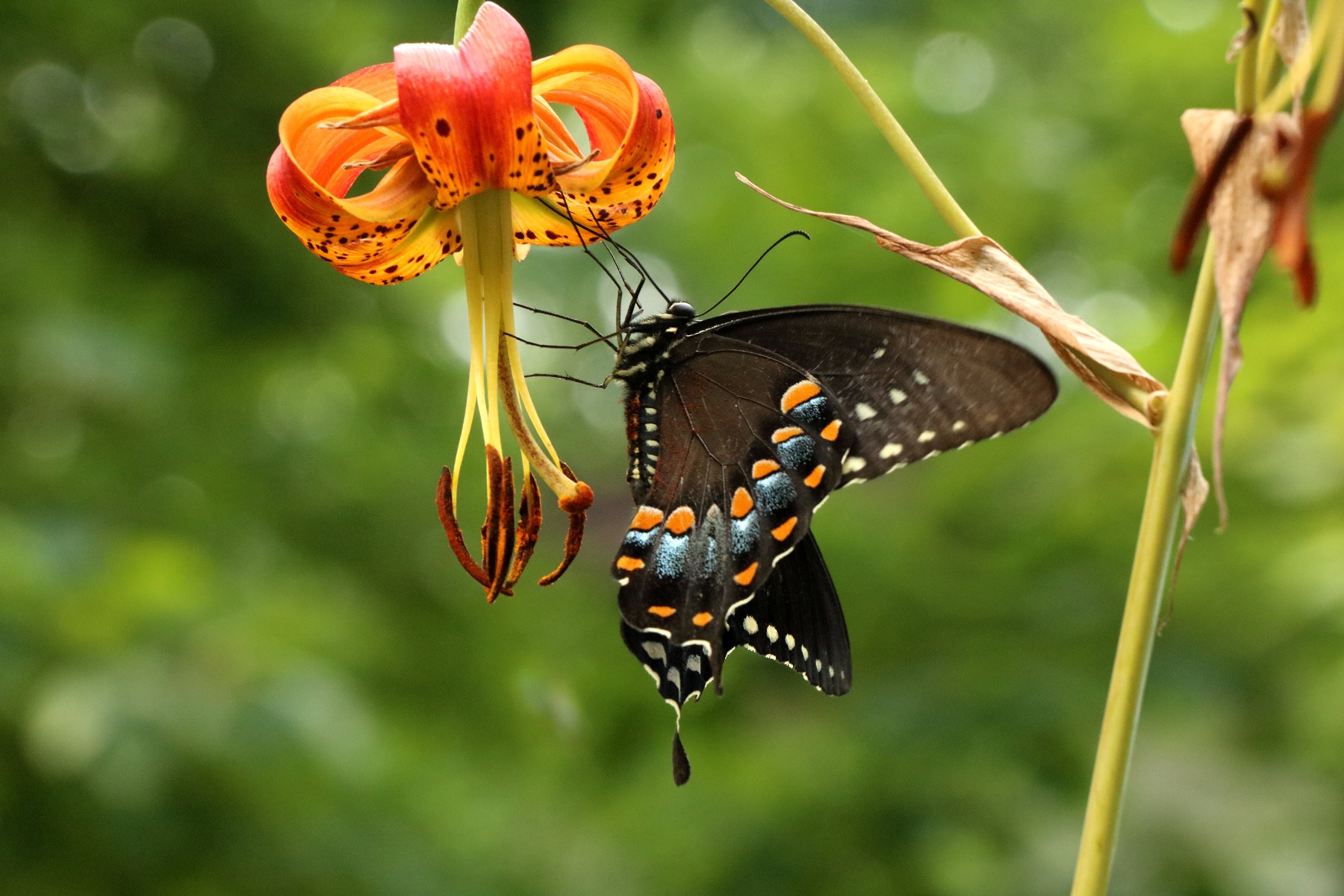
on Turkscap Lily
Serviceberry (Amelanchier species and hybrids), blooming even before the Redbuds and Dogwoods, are another great addition with lots of wildlife value for the forest edge. Clusters of white blooms are followed in June (thus the other common name Juneberry) by berries that turn from green to red to blue. Grosbeaks and many other birds cherish the fruit. Insects love the leaves. The autumn foliage is apparently outstanding for all of the Serviceberry species. We can attest that the hybrid cultivar Amelanchier X grandiflora ‘Autumn Brilliance’ is simply stunning in fall.
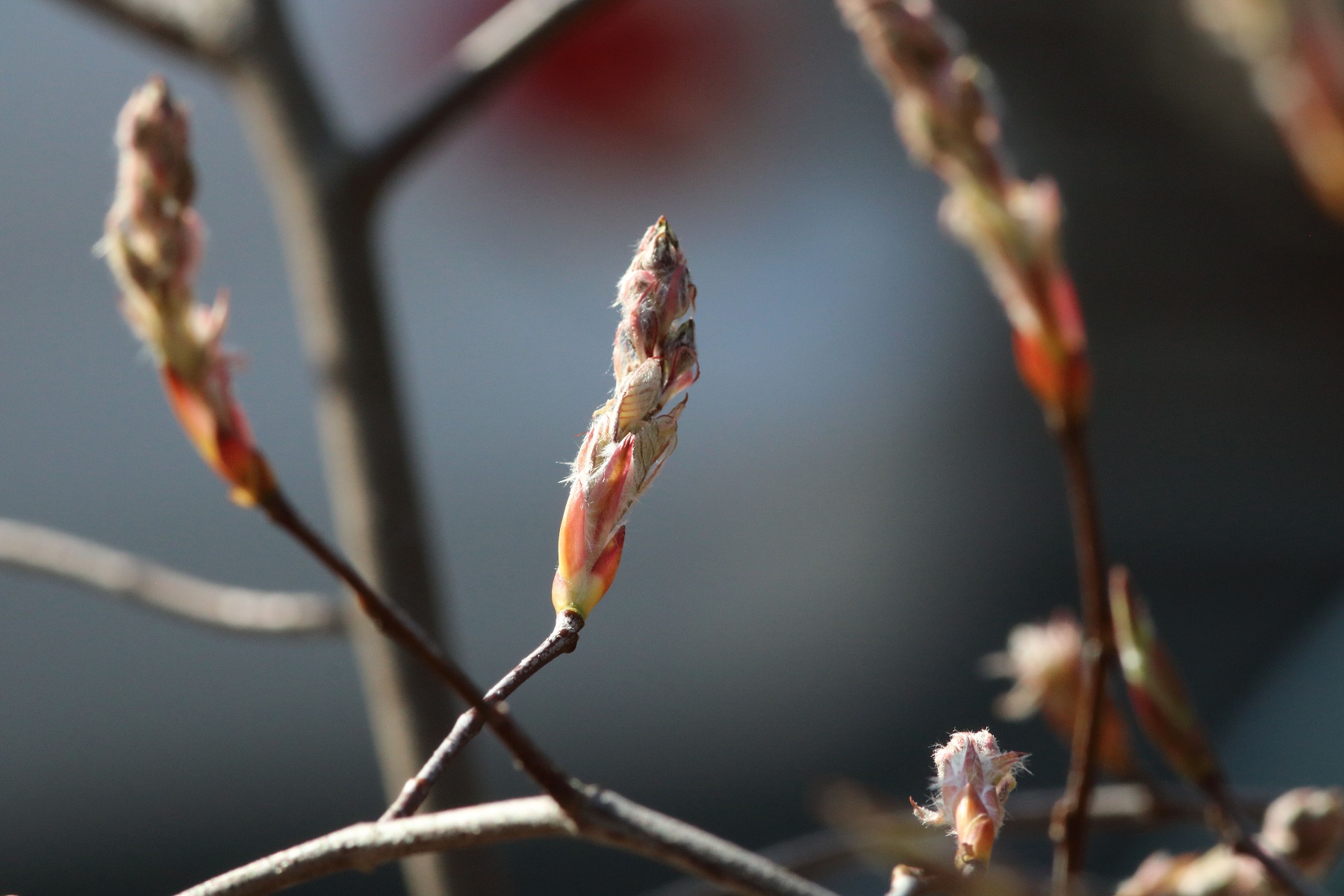
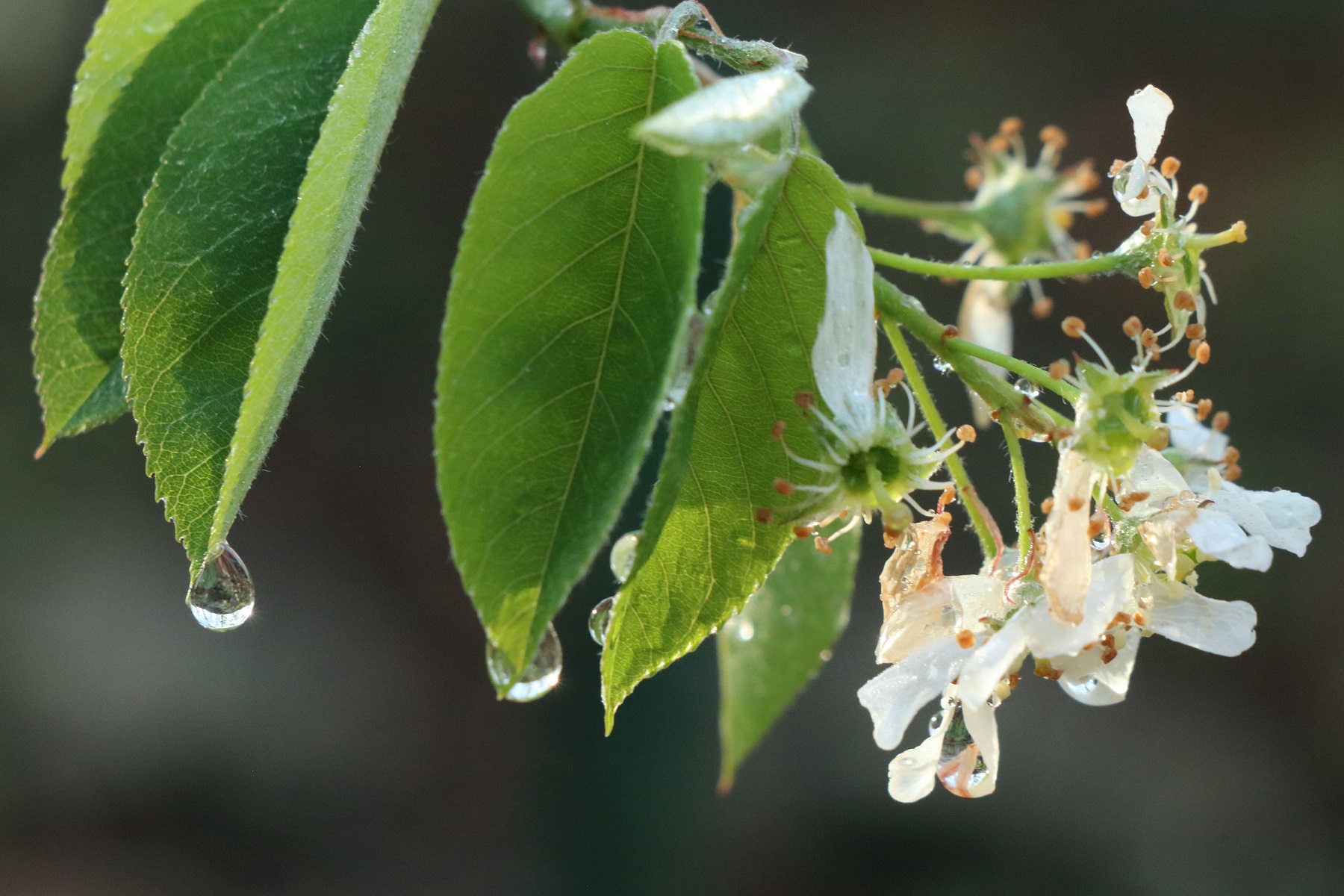
'Autumn Brilliance' Flowers
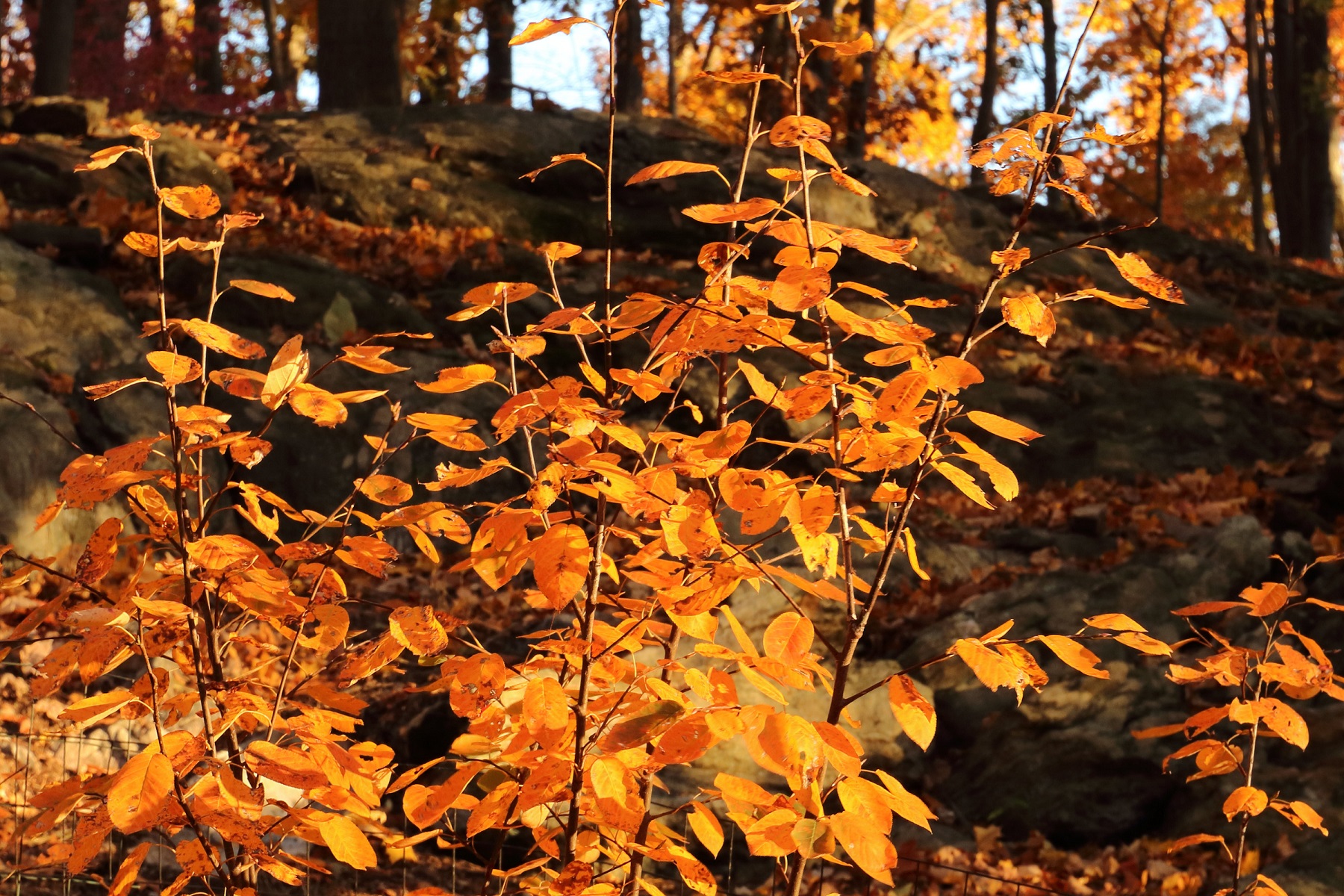
We plan to experiment with additional serviceberry species in the future. Recently we added Shadblow Serviceberry (Amelanchier canadensis) on a slope, but it’s too early to tell how well it will be doing.
One of the first shrubs we added to our landscape was Sweet Pepperbush, and we did not regret it. It’s fragrance in bloom is unbelievable, as the myriads of insects feeding on it can attest. Flowering happens in mid summer, a time when few other shade-tolerant trees bloom. We also like the spring habit of this shrub, with spent seed pods remaining on the branches while new leaves appear. Fall color is a beautiful yellow. This shrub slowly expands by root suckers, which is a good thing. It typically stays below 6-8 feet. The plant is as deer resistant as it gets – a perfect combination for the northeast forests. We have recently added more of these versatile shrubs, also known under the name Summersweet, all over the property.
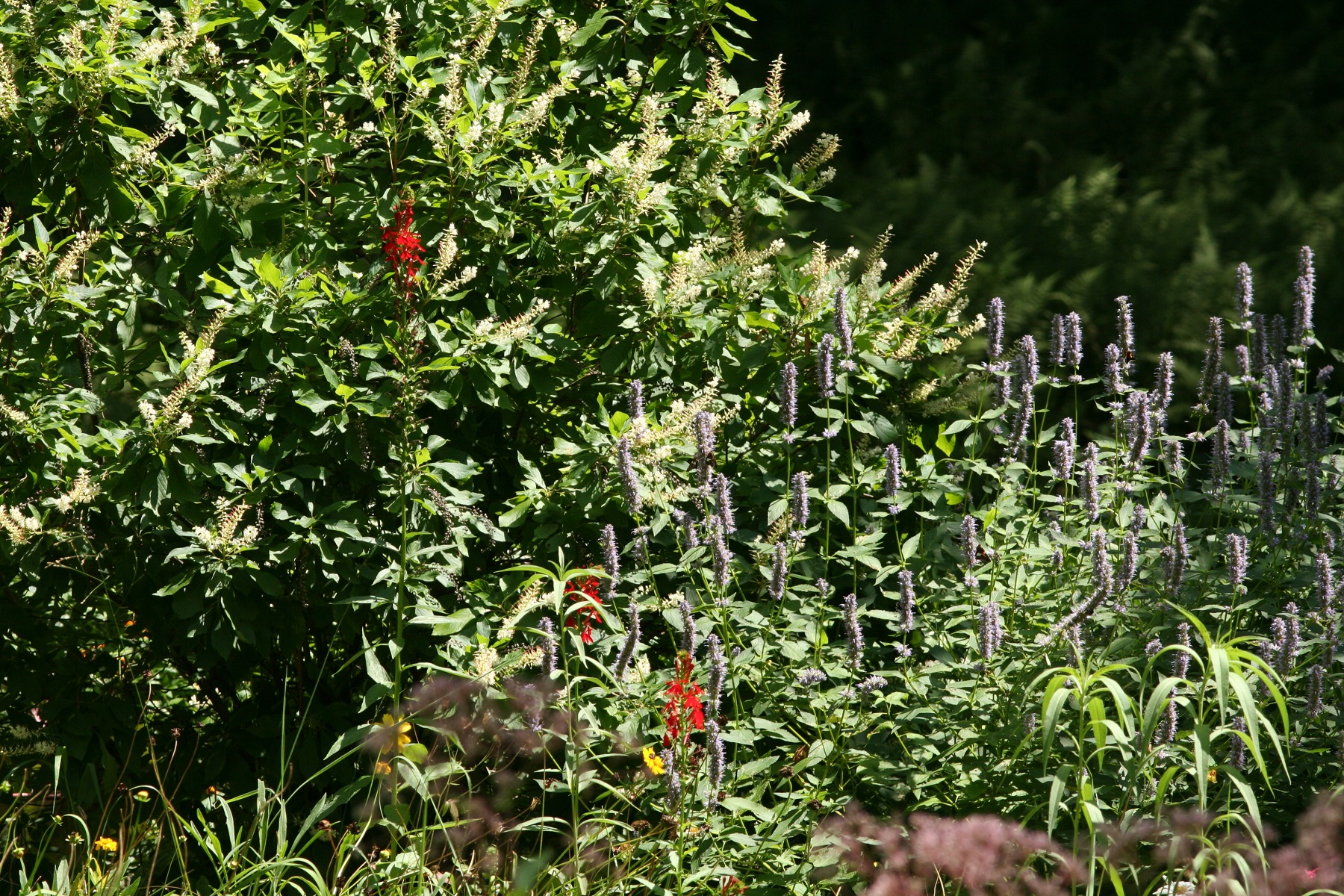
+ Cardinal Flower and Anise Hyssop
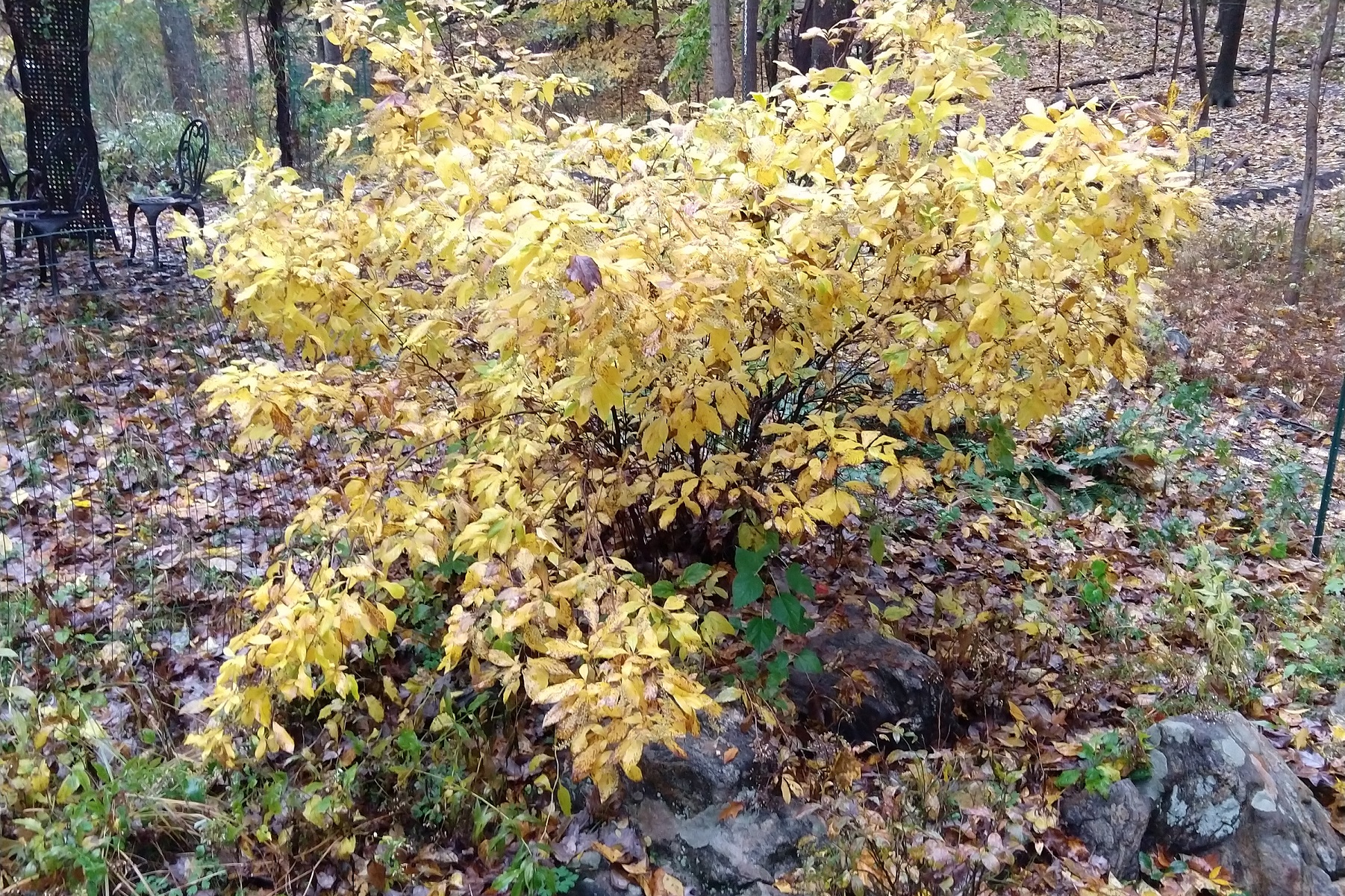
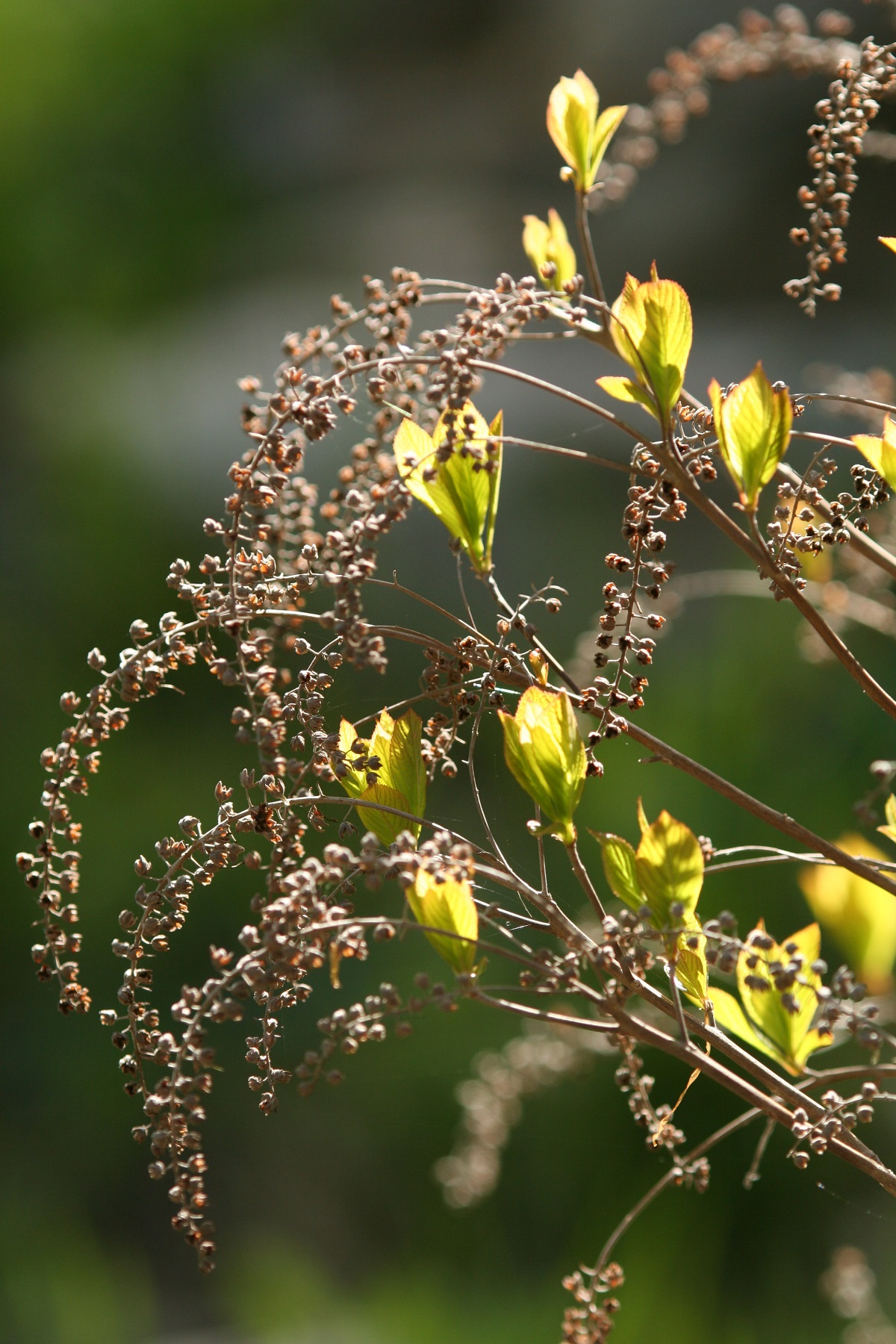
‘Ruby Spice’, a reddish-pink blooming cultivar of Sweet Pepperbush is perfect for those who think that white flowers are just too plain. This shrub is a bit more compact than the species, but attracts insects equally well.
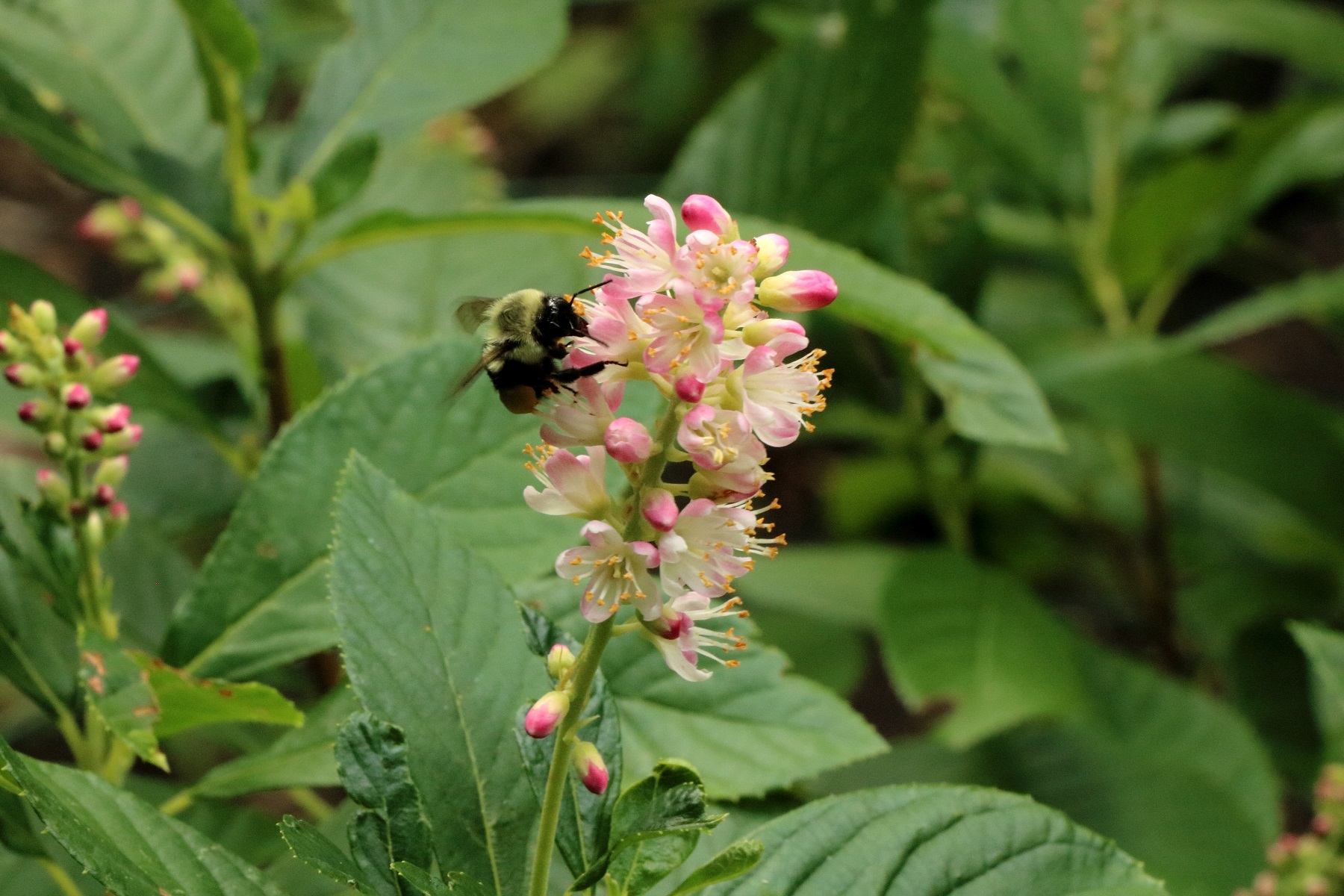
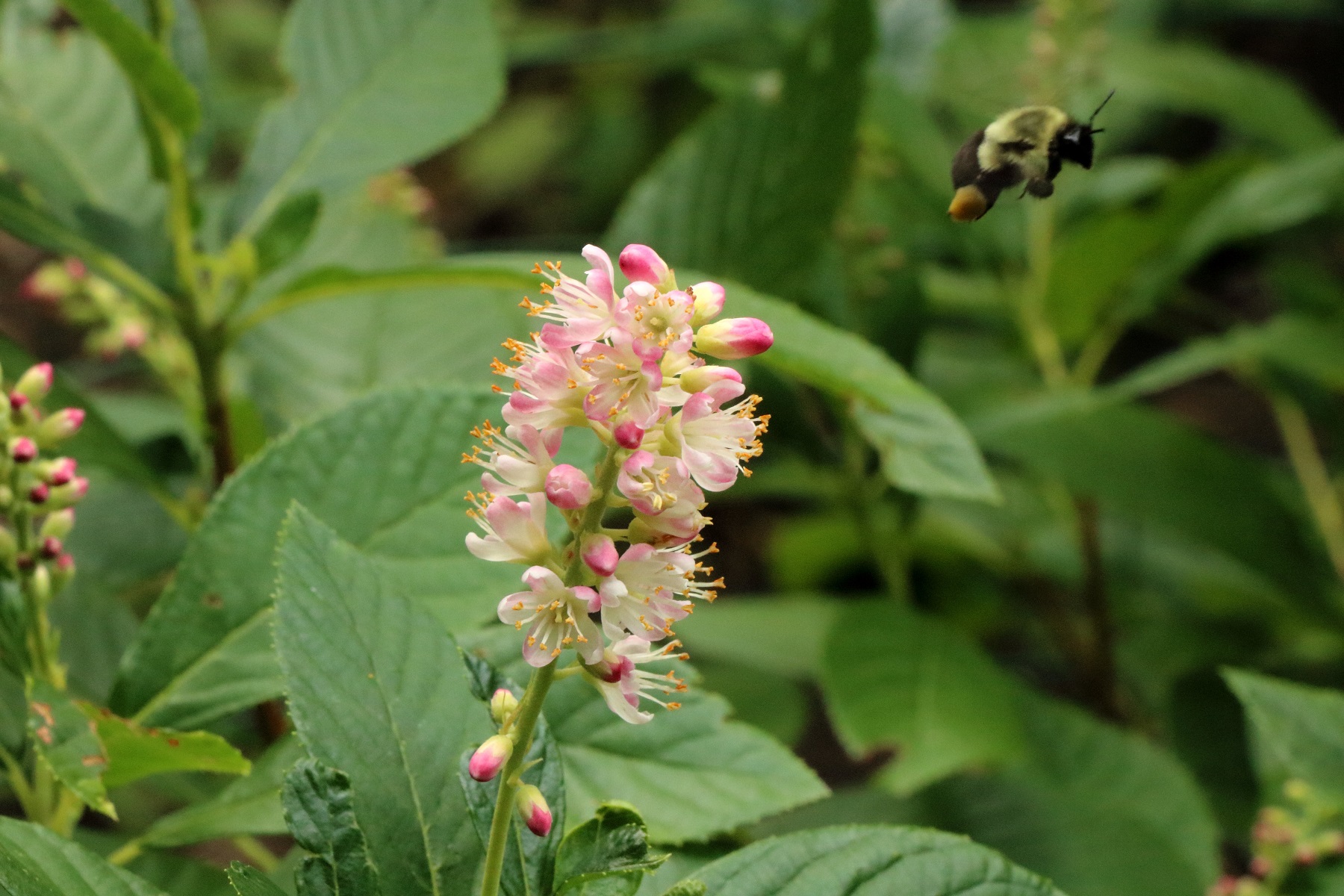

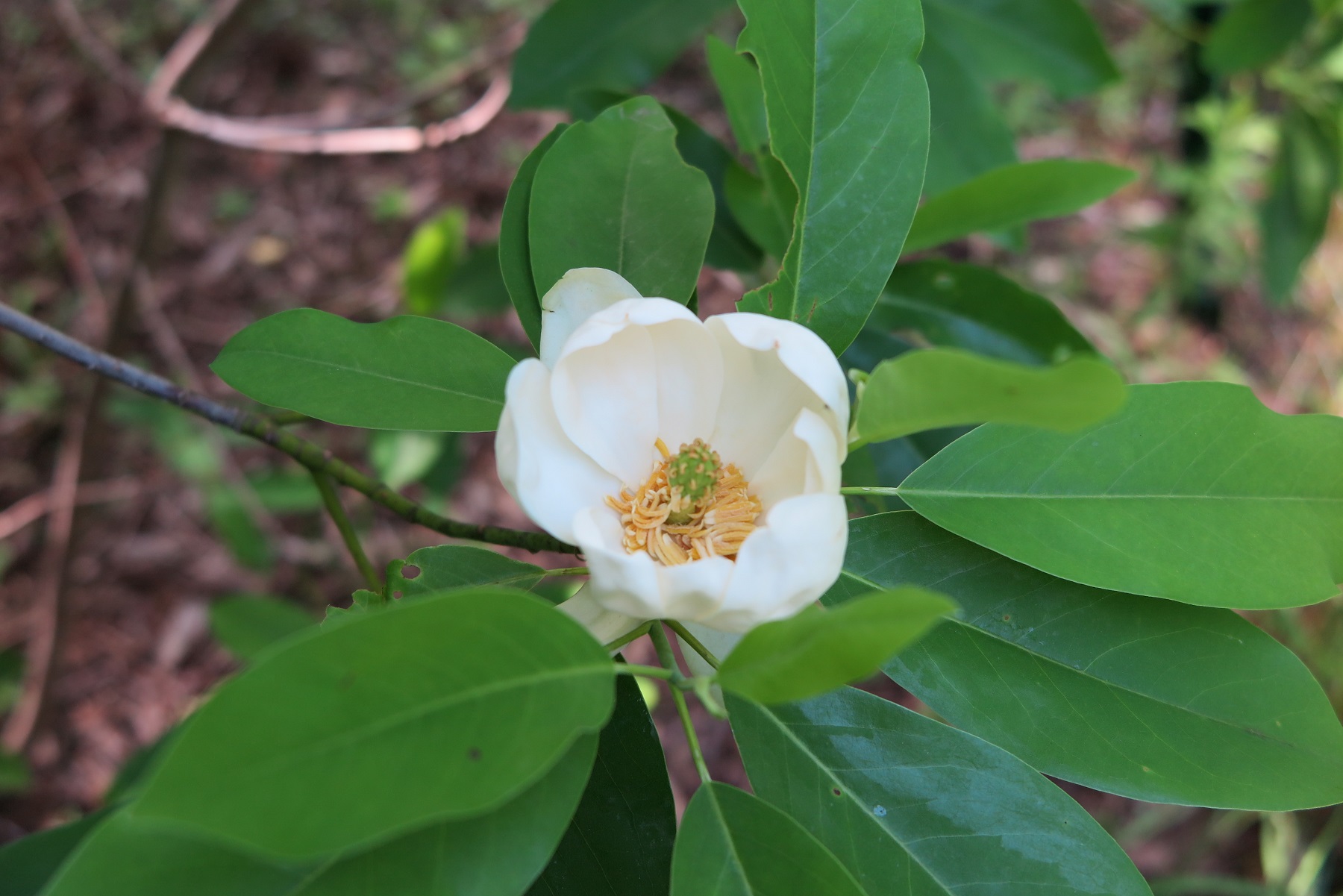
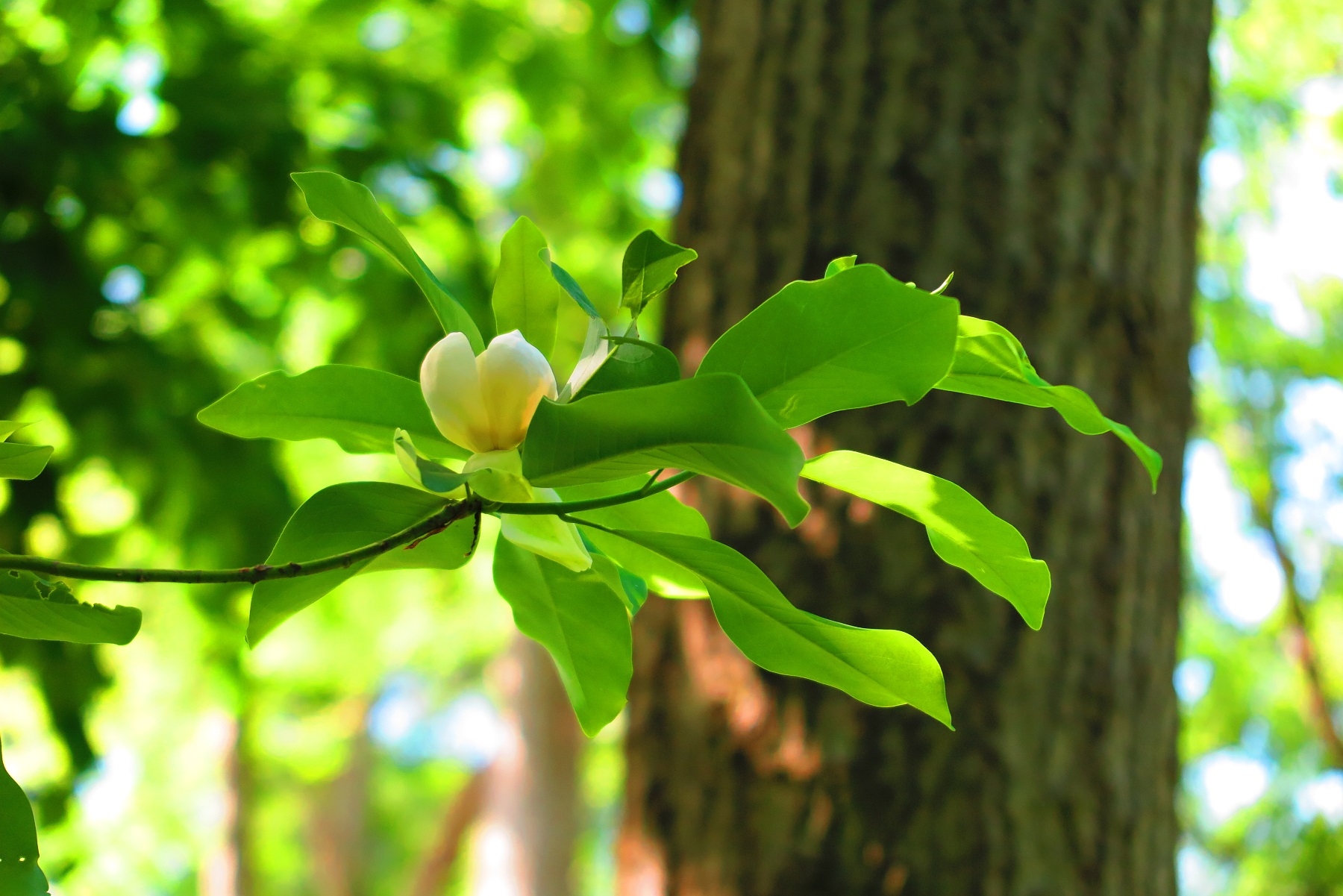
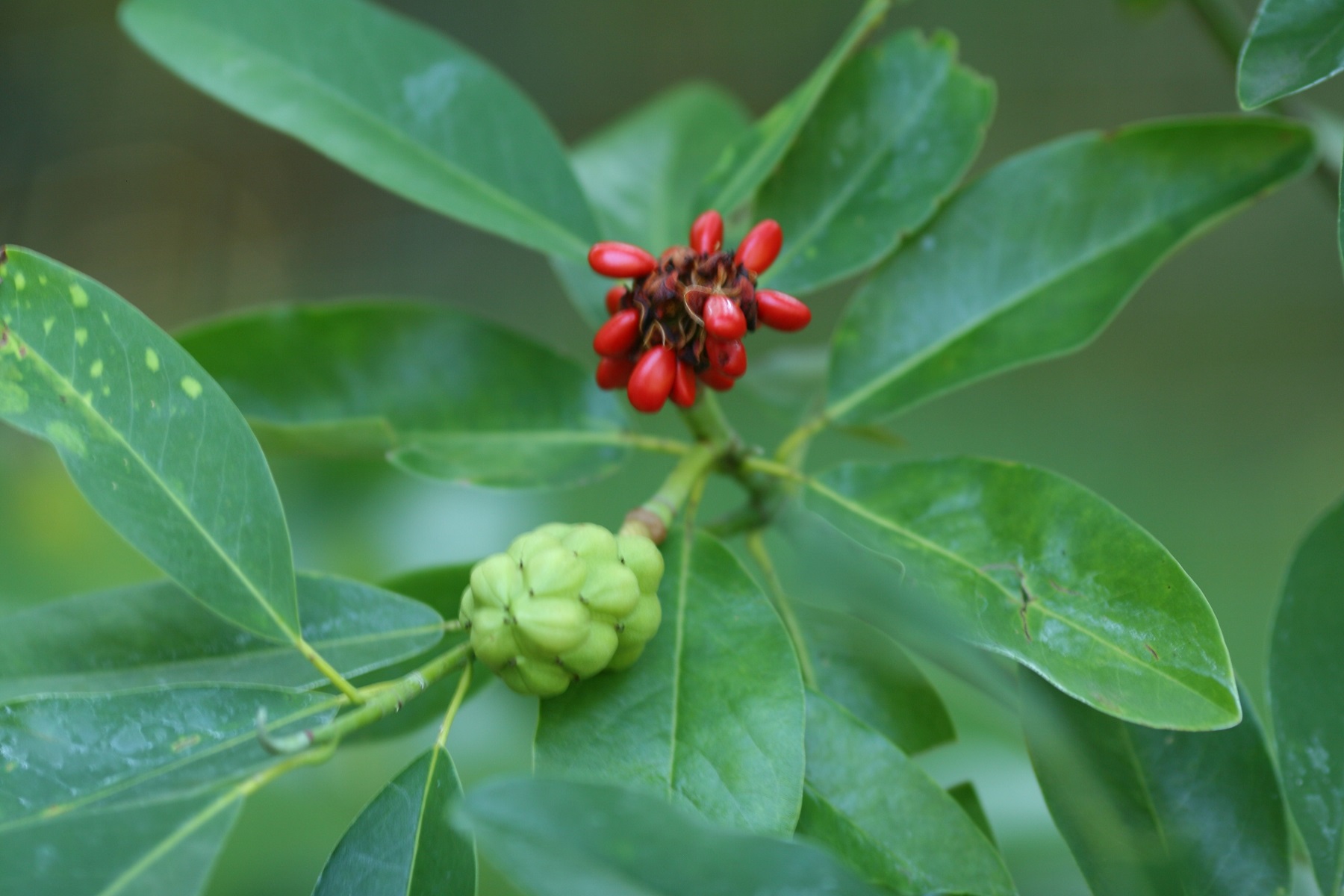
Franklin Tree is quite a curiosity. Discovered in the 1700s in a single location in Georgia by botanist John Bartram, friend of Benjamin Franklin, this tree is now extinct in the wild. It is the single species of an entire genus, and most closely related to Camellias and Stewartias found in Asia. The tree has successfully been propagated by Bertram’s son William in Philadelphia from seed they had collected in Georgia. All existing Franklin trees therefore stem from the original ones grown in Bertram’s garden in Philadelphia.
Franklin Tree has quite beautiful large white flowers with yellow centers that bloom very late in fall when leaves are already starting to turn color. Autumn color is a beautiful red. The seeds take more than a year to ripen on the tree.
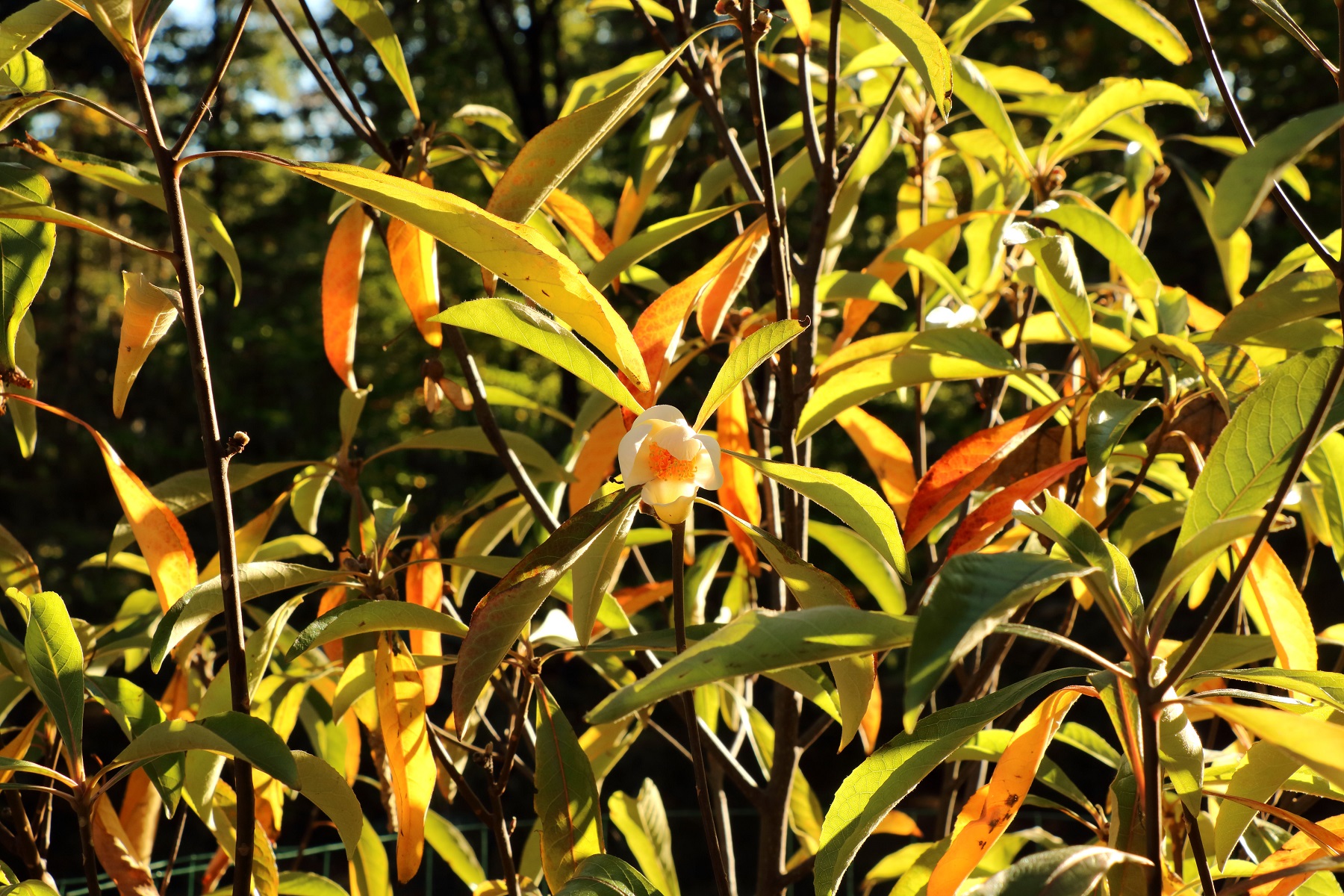
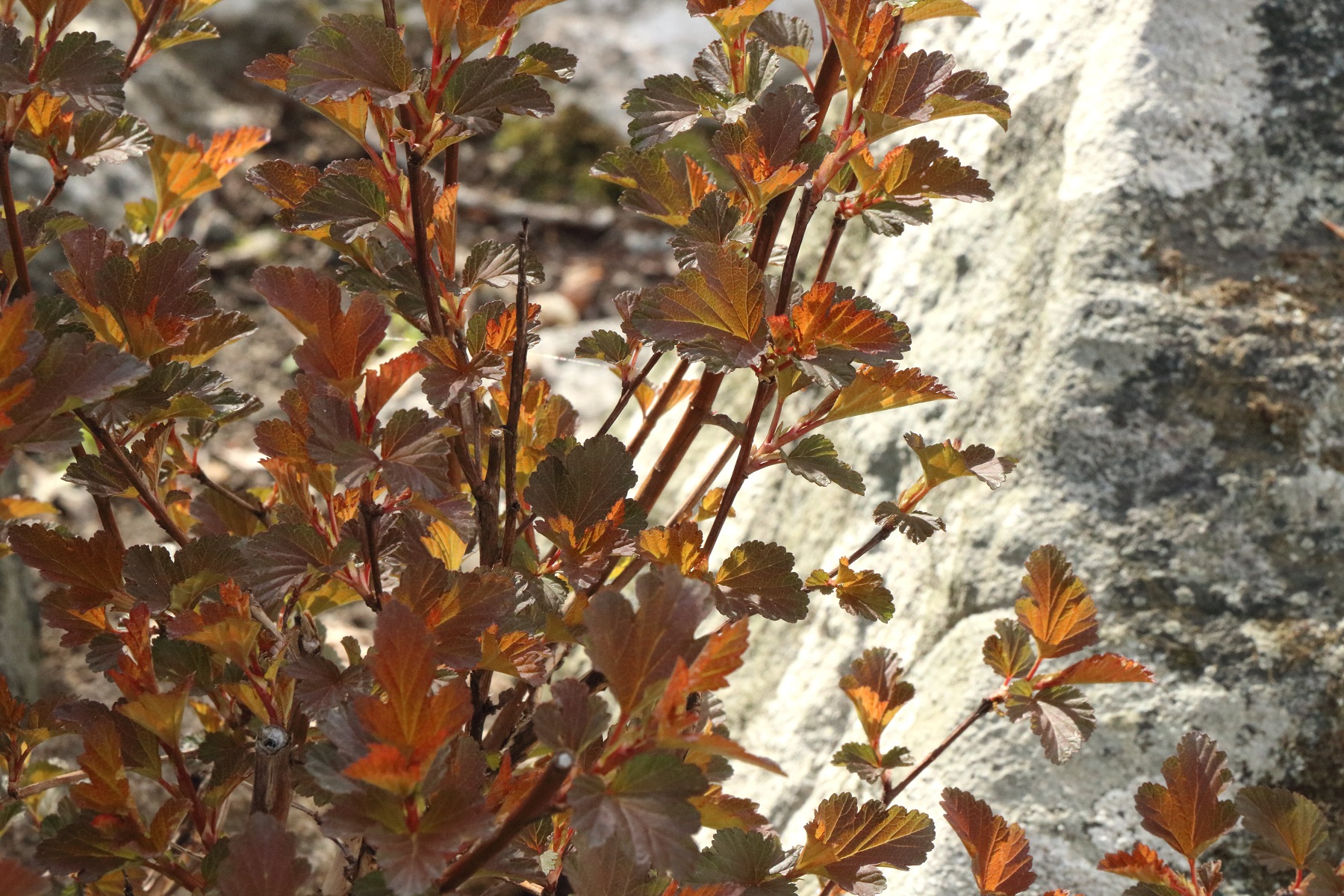

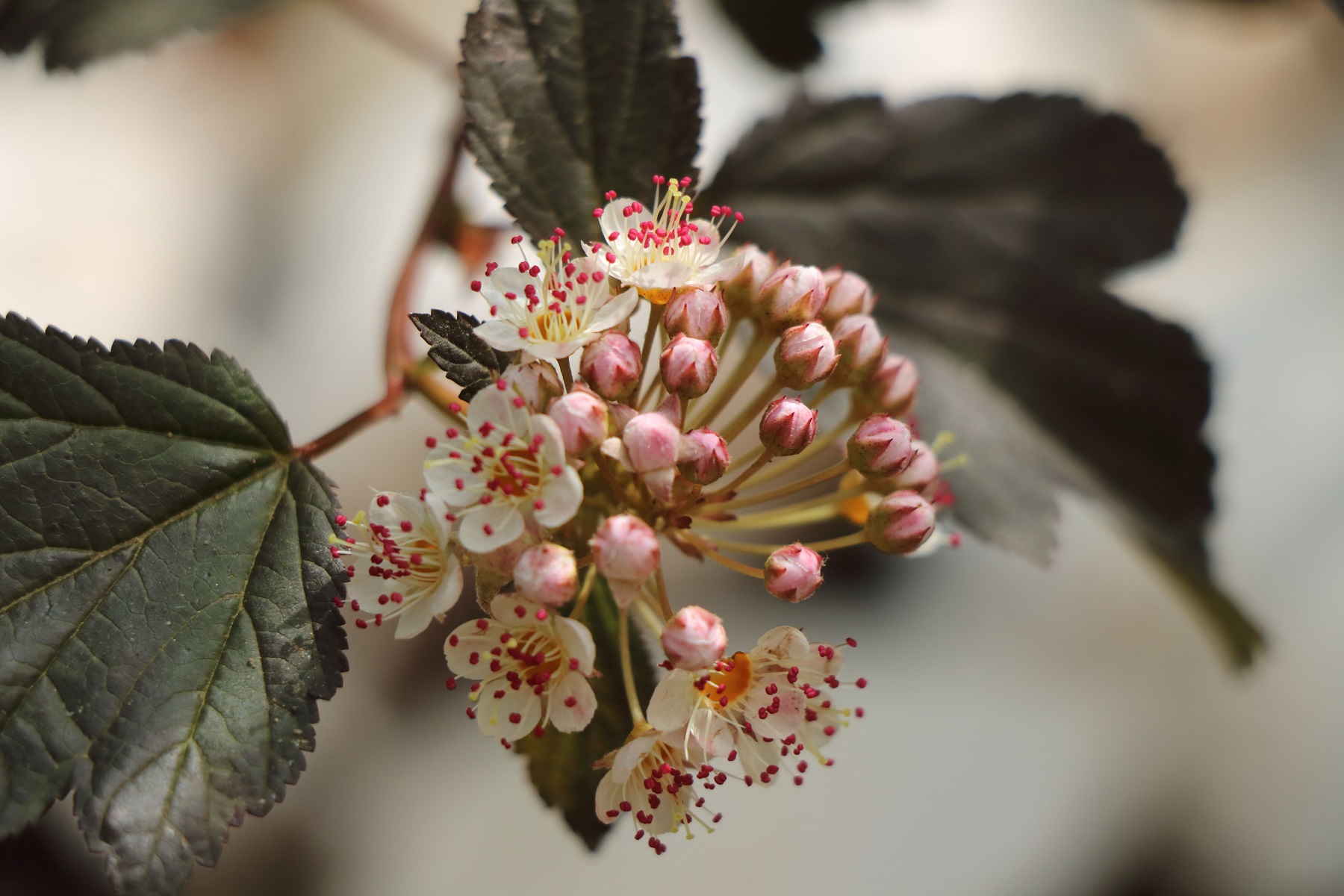
This mid-sized shrub, native to Eastern USA from Virginia on southward, seems to be right at home in our warming New York climate. Climate change is shifting the growing ranges of many plants, and we are loosing some beloved ones, such as Pagoda Dogwoods that scorch in hot summers, while gaining others like Carolina Allspice. Let’s hope that the insects feeding on the southern species will also be able to migrate north, so that diverse ecosystems with intact food chains can survive.
In our garden, Carolina Allspice (or synonymously Sweetshrub) does very well under shady small trees. It’s a suckering shrub and blooming has not been prolific yet, but the colors of the blooms are definitely worth the wait. An outer-worldly dark maroon.
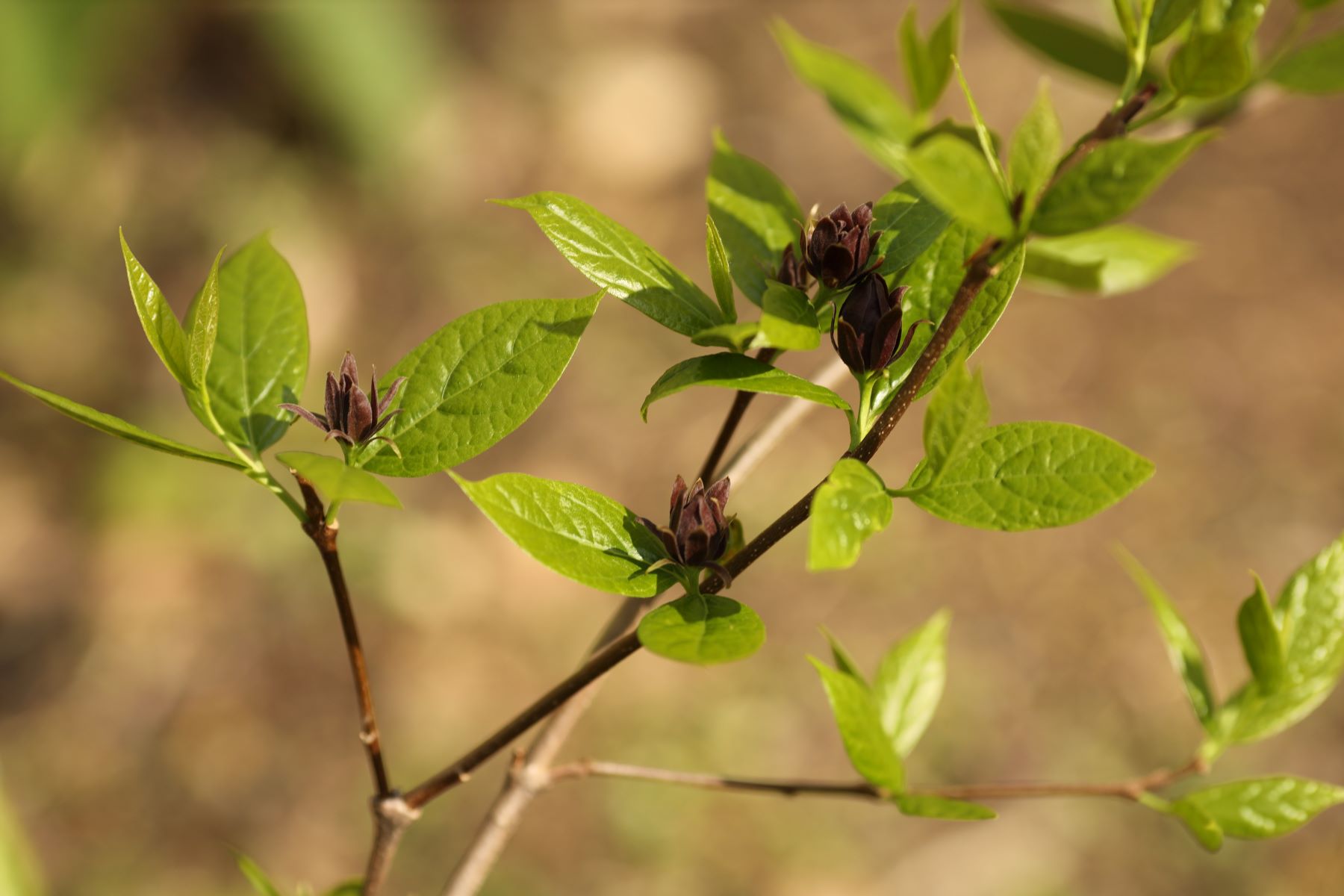
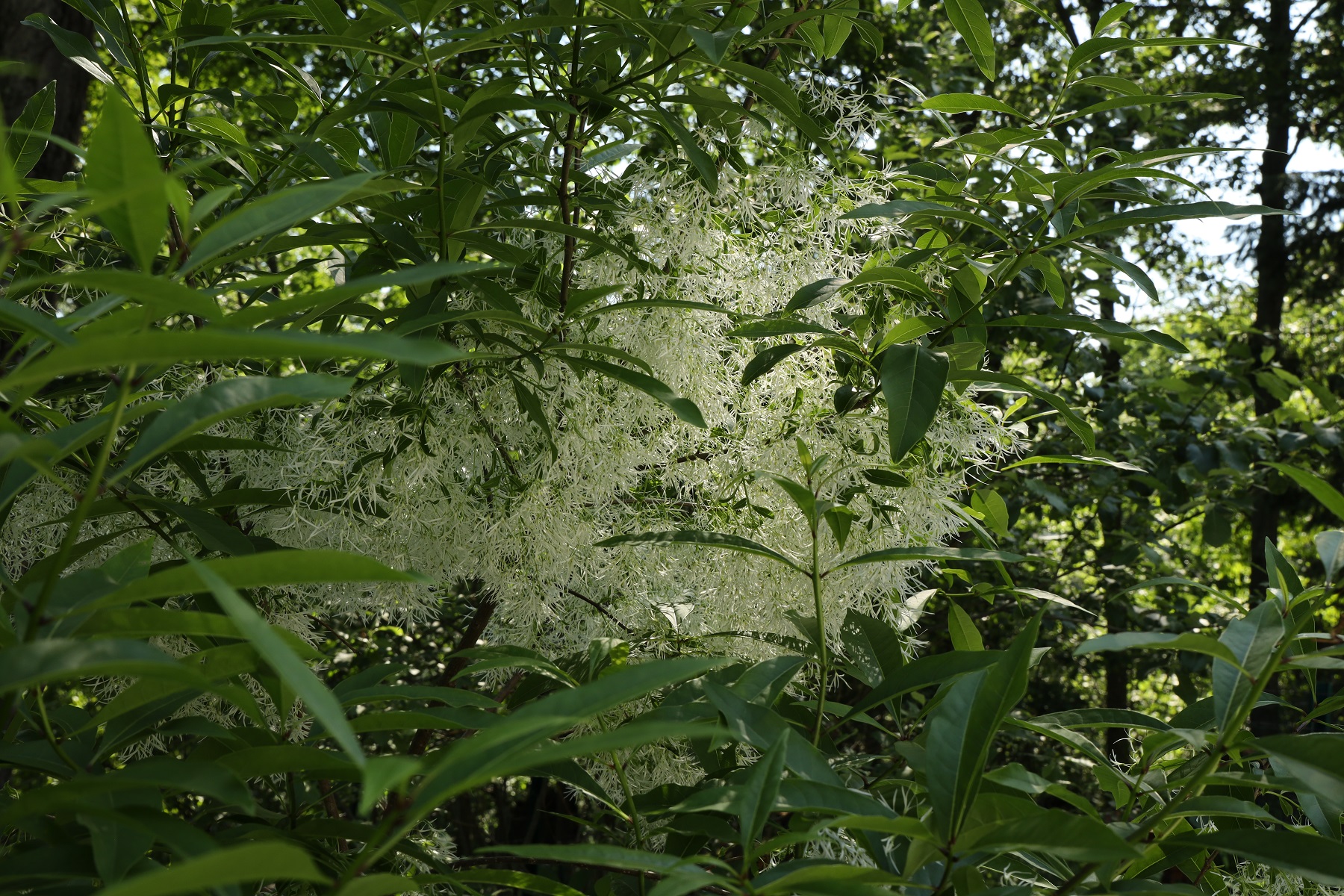

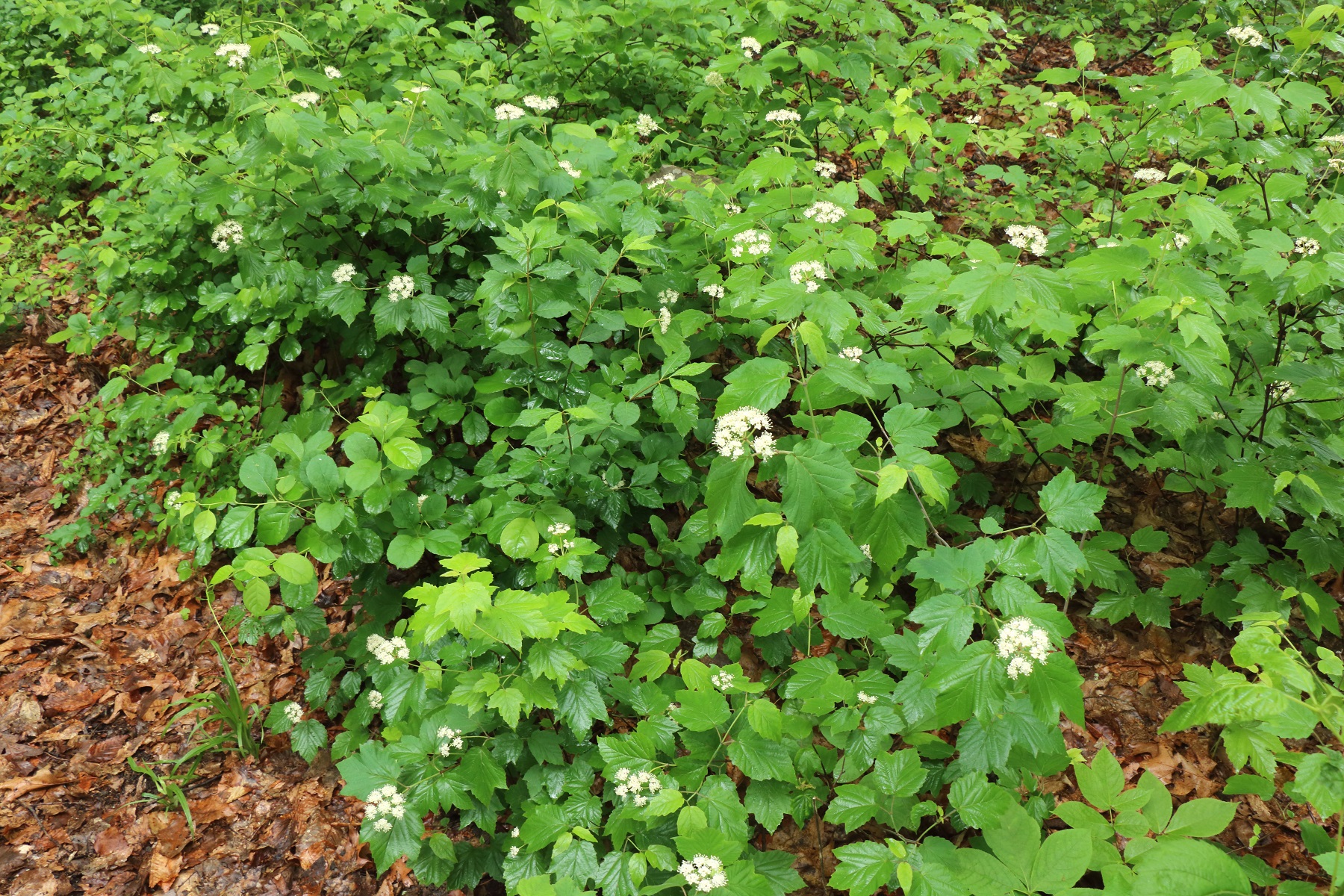
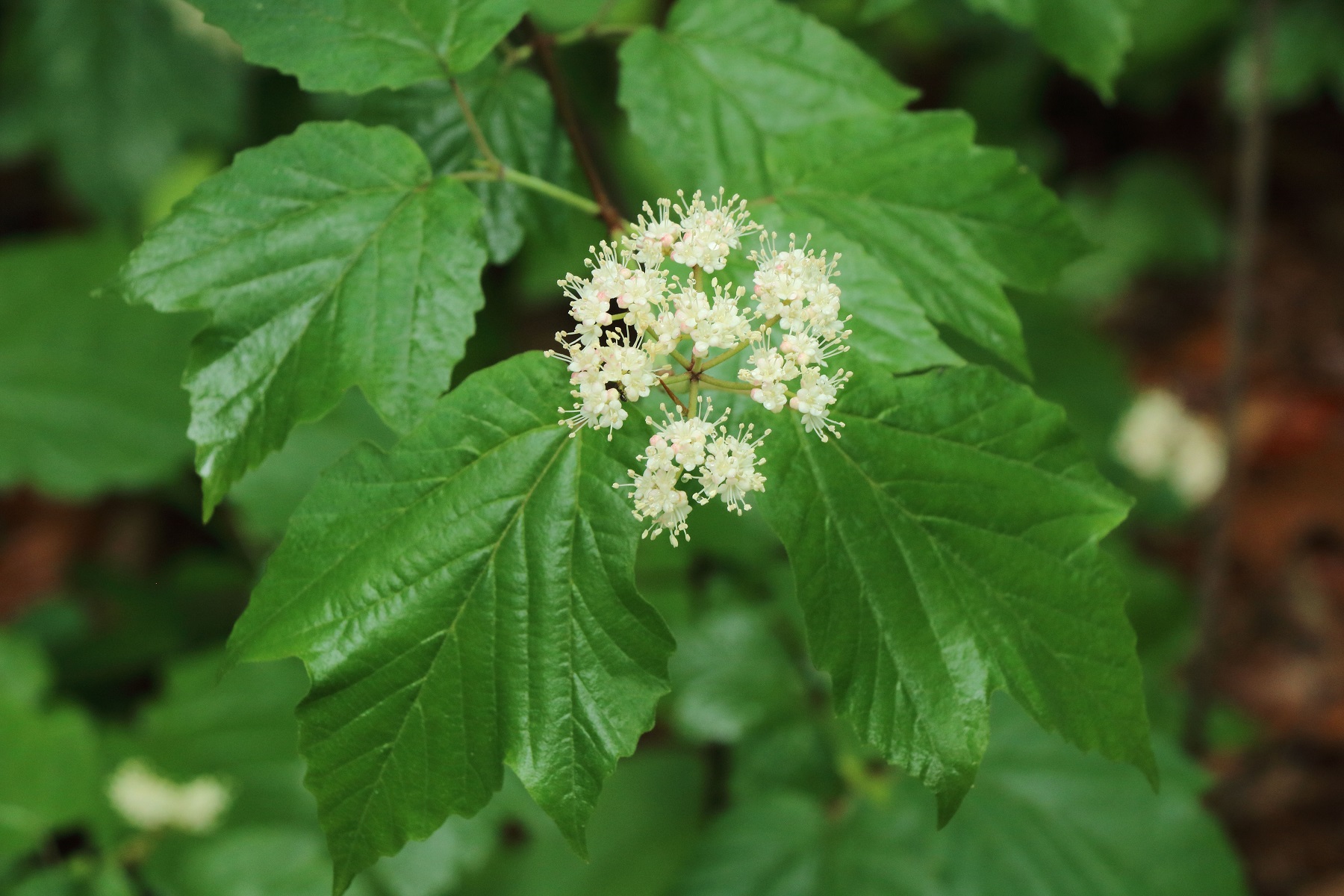
Flower Cluster
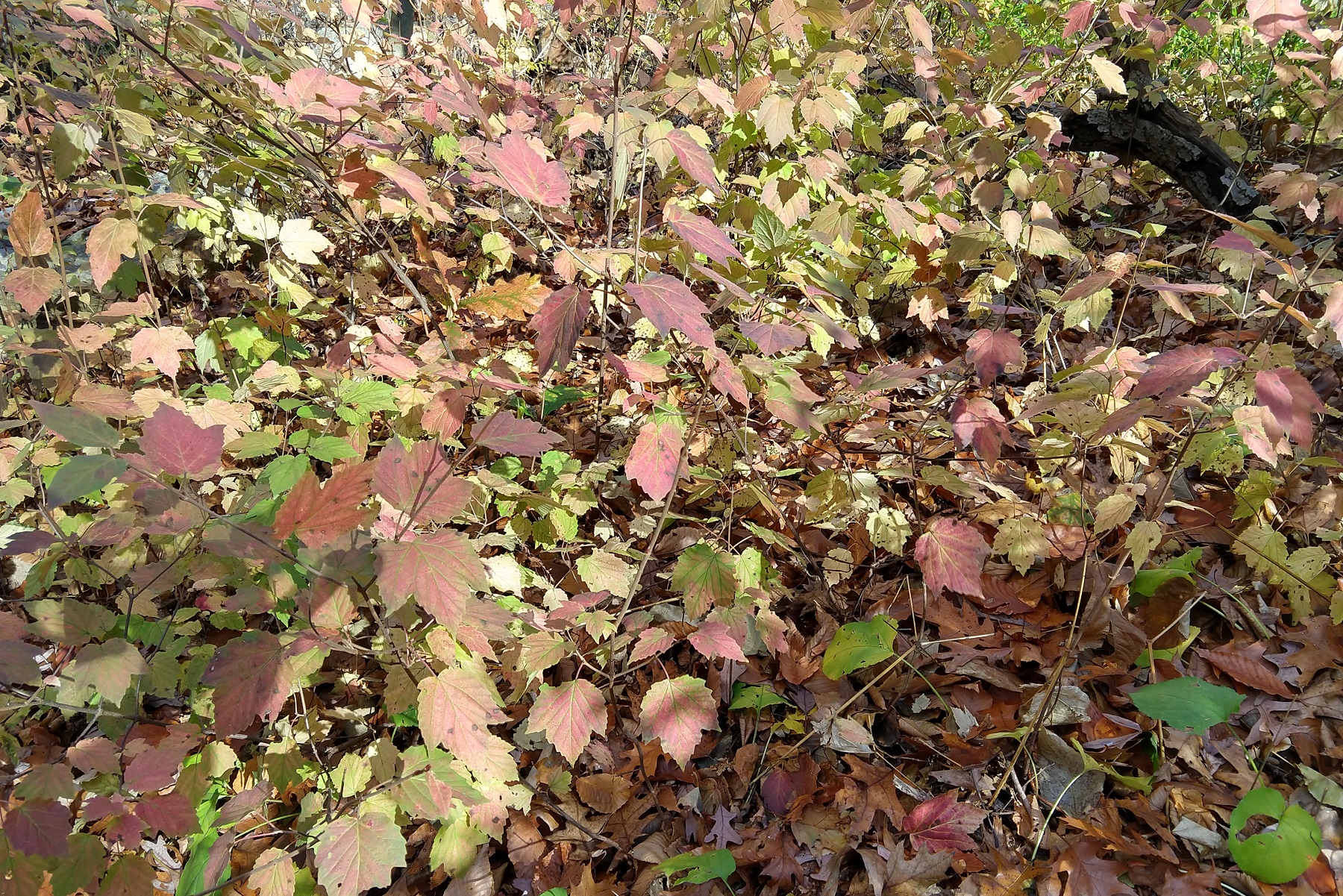
Fall Color